Promoting Responsible Tourism in Pakistan’s North
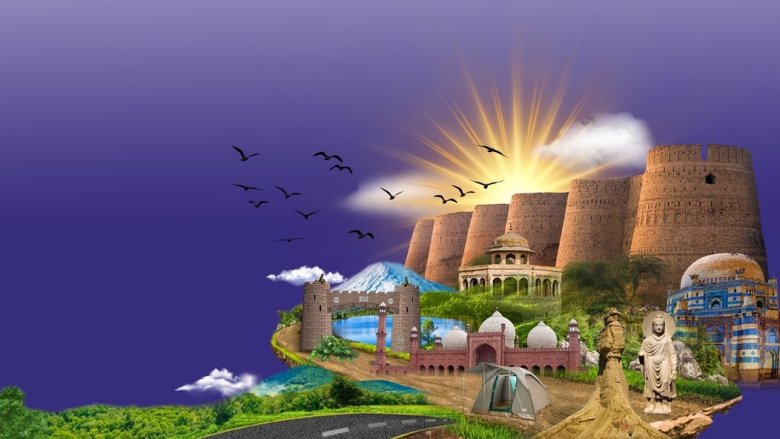
Pakistan’s tourist attractions are diverse
World Bank Pakistan
Growing up, Muhammad Numan saw a cleaner, more natural environment in Khyber Pakhtunkhwa’s tourist destinations. But as time passed and tourism surged, the local landscape he once knew began to change. The influx of tourists resulted in a growing pile of litter across the otherwise scenic sites in the north.
The travel and tourism sector’s total contribution to Pakistan’s GDP was 5.9 percent in 2022 and 4.2 million jobs. This is sub-optimal considering the diverse tourist sites located across the country. Pakistan attracted ~US$ 16 billion in visitor spending in 2022 which is projected to touch ~US$ 30 billion in 2033.
Pakistan experienced an unprecedented surge in domestic tourism immediately after the Covid induced travel restrictions were lifted: For instance, in 2021 and 2022, over 1.2 million domestic and international tourists visited the country’s Khyber Pakhtunkhwa province alone .
To manage this increasing all-season footfall of visitors while harnessing its understated economic potential, the local authorities, communities, and private sector require resources, equipment and training without losing focus on green and inclusive tourism.
Determined to make a change, Numan, who now works as a manager at a local hotel in Swat district of Khyber Pakhtunkhwa, sought ways to mitigate the negative impact of the tourism industry on the ecosystem. That is when he came across the “Travel Responsibly for Experiencing Eco-tourism in Khyber Pakhtunkhwa” (TREK) initiative – a partnership between the Government of Khyber Pakhtunkhwa, World Bank (WB) and Nestlé Pakistan to promote and support responsible tourism initiatives.
TREK complements the ongoing activities of Khyber Pakhtunkhwa Integrated Tourism Development Project (KITE) project for heritage preservation and tourism infrastructure development. Since 2020, it has completed awareness campaigns for tourists, and training of local communities and hospitality businesses on waste management. TREK has trained over 650 participants from more than 150 hotels and restaurants in Khyber Pakhtunkhwa’s tourist areas. The beneficiaries also included local communities, local authorities and academia of Peshawar, Nathiagali, Abbottabad, Swat , Naran and Chitral districts.
These trainings concentrated on solid waste minimization, segregation, management, and recycling techniques. Public service messages on responsible tourism were also launched through social media and radio campaigns in Khyber Pakhtunkhwa and cities of Islamabad and Lahore. Most country’s domestic tourists are concentrated in these geographies and were thus able to receive communication on tourist helplines on the importance of keeping the sites litter-free.
10,000 reusable bags were distributed to tourists and the hotel association in tourist hotspots aiming to encourage their use and minimize littering. In parallel, the IDA-financed KITE project provided waste bins, garbage collection and compacting machinery to the local authorities in Nathiagali, Naran, Chitral and Kumrat districts of Khyber Pakhtunkhwa, and a few locations in Punjab province, and installed 50 tourist information signboards to complement the awareness campaigns.
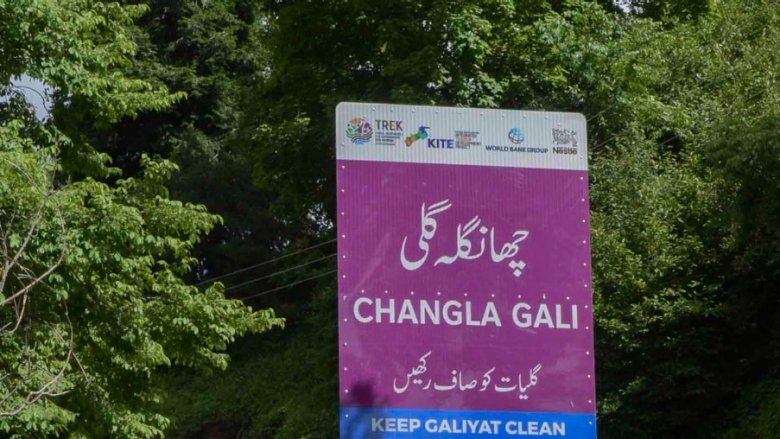
Tourist information sign boards in Galiyat, Pakistan
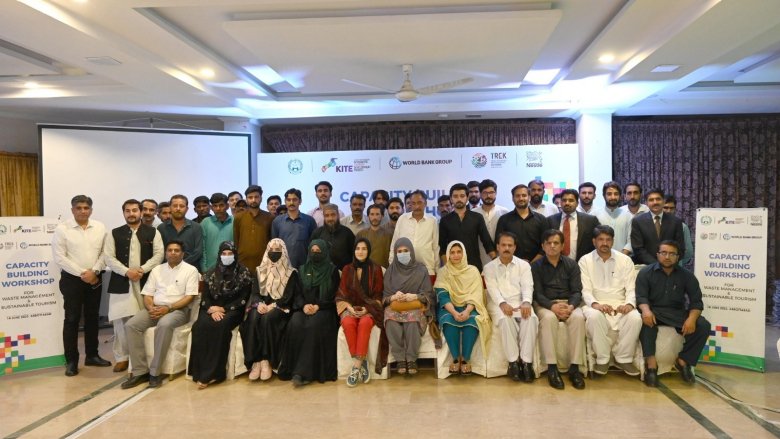
TREK Awareness Workshop for Community and Local Government Participants
Incorporating the knowledge from these sessions, like several other participants, Numan introduced eco-friendly practices at his hotel. He also spearheads a community-funded clean-up initiative in his hometown of Mardan district. This initiative has transformed into a community-driven effort, with residents actively participating in regular clean-up drives. Such sustainable transformations encapsulate the very essence of what TREK envisions for communities throughout the province and beyond.
TREK has propelled its partners towards impactful activities by encouraging collaboration with the private sector. Its partner in the initiative, Nestlé Pakistan, is taking concrete actions to create circular systems that make it easier to collect, recycle and reuse products that use plastic. It is committed to designing 100 percent of its plastic packaging for recycling and expects to achieve a 95 percent target by 2025.
The Government of Khyber Pakhtunkhwa has allocated resources and supports its teams to ensure green and inclusive destination management in partnership with the private sector.
The project has also provided machinery for snow removal and solid waste management to local authorities to improve accessibility, traffic flow and promote sustainable tourism in the province.
TREK's inclusivity stands out, inviting participants from diverse backgrounds, including women, youth, and the transgender community. Zareen Akhtar, a social worker, and human rights activist who underwent TREK training, testified to the program's transformative impact. She acknowledged the newfound knowledge she gained, eager to share it with others. She emphasized that she’s one of the many women in this region who have had the opportunity to attend these trainings. “Inclusion of women not only has a wider social impact but also a major mindset shift in the region, allowing for a cohesive awareness within the social fabric of the community.”
Initiatives like TREK have the power to transform the tourism landscape in some of Pakistan's most pristine destinations and ensure that future generations continue to enjoy these in years to come. In its next phase, TREK will integrate additional players from the private and financial sectors of the country to launch activities that support community empowerment and investment mobilization for job creation.
By Kiran Afzal , Senior Private Sector Specialist, World Bank Pakistan, Touseef Khalid , Project Director, Khyber Pakhtunkhwa Integrated Tourism Development (KITE) Project, and Sheikh Waqar Ahmad , Head of Corporate Affairs and Sustainability, Nestlé Pakistan.
This site uses cookies to optimize functionality and give you the best possible experience. If you continue to navigate this website beyond this page, cookies will be placed on your browser. To learn more about cookies, click here .
- Pakistan Today
- Profit Magazine
- Paperazzi Magazine


Role of universities in youth development
The failures of indian demonetization, the role of journalism in national defence, root of the problem, chinese firms lead pakistan’s mobile phone market, crackdown on illegal possession of wildlife in punjab: marriyum aurangzeb issues…, kidnappers demand rs15m ransom for release of two boys taken at…, karachi police decide on mobilizing shaheen force to combat alarming rise…, chinese foreign minister wang yi urges japan to promote peace in…, india’s congress says facing ‘tax terrorism’ after second tax notice, israel kills dozens in airstrikes across the gaza strip, china’s global security initiative ‘crucial in fight against terrorism’: bfa, un court orders israel to stop gaza famine, hamas urges ceasefire, pcb likely to appoint babar azam captain of t20 side, new coach by next week: pcb offers long term contracts to…, cricket australia willing to host bilateral series if bcci and pcb…, pakistani cricketers move down in test rankings after sri lanka’s success…, pakistan to play three odis, as many t20is in australia in…, tourism in pakistan: a long way off.
Rich potential needs to be realized

Tourism significantly boosts economic status and global harmony by connecting different cultures, increasing local production rates and competition among tourism companies. It also reduces poverty and supports middle and lower-level economic communities. Tourism is predicted to reach $1.8 billion by 2030, strong tourist endeavours benefit any country by creating jobs, raising income, attracting diverse investments, facilitating tax collection, and improving GDP.
It contributes to economic growth across various sectors, increasing foreign exchange profits, spurring industrial expansion, and supporting travel and lodging industries. Rapid economic expansion attracts international business travellers, increasing developed nations’ foreign reserves.
As the world increasingly turns to Pakistan’s hidden gem, the future of tourism holds the promise of transformation, fostering economic growth, cultural exchange, and global understanding. Pakistan’s tourism potential requires a comprehensive management plan, investments, marketing, attractive packages, and infrastructure, with key factors including information availability, security, 24/7 emergency support, and a courteous workforce
Pakistan attracts 0.7 million tourists annually, a significant increase from the previous decade. In 2009, Pakistan ranked among 25 percent of the world’s most visited places based on its world heritage sites. According to the World Bank, Pakistan brought in $16 billion in tourist spending in 2022, and that amount is expected to rise to $30 billion by 2033. The travel and tourism sector’s total contribution to Pakistan’s GDP was 5.9 percent in 2022 and 4.2 million jobs. With its diverse landscapes, historical treasures, and vibrant culture, Pakistan is gaining popularity as a global travel destination.
Pakistan is a significant site for prehistoric archaeological research, containing ancient civilizations like the Gandhara Civilization and the Indus Valley Civilization, and the Mughal Empire. The Gandhara Civilization, linked to an ancient kingdom, is considered the sixth most beautiful area on earth. The Indus Valley Civilization, linked to the Bronze Era, was established on a 1.2 million km area with an estimated population of 5 million. Samples, antiques, and collections from these civilizations are housed in various museums in Pakistan.
Religious tourism in Pakistan involves visiting holy places for worship and spiritual pleasure. The country has a rich Islamic heritage and diverse religious heritage from other religions. The Kalash people, animists with ancient Albanian roots, have a unique culture with captivating festivals. Gurdwaras’ holy place in Nankana Sahib and Hasan Abdal are a significant persuasion site for the Sikh community. The Kartarpur Corridor connects the Dera Baba Nanak shrine in northwest India to Gurdwara Darbar Sahib in Pakistan, believed to be a place of Sikhism foundation. Other notable shrines in Pakistan include those of Shah Abdul Latif Bhitai, Lal Shahbaz Qalandar, Data Ganj Bakhsh Ali Hujwairi, Hazrat Baba Fariduddin Ganj-e-Shakar, Mian Mir, Shah Hussain, and Bahauddin Zakaria.
Pakistani culture values sports, with cricket being the favourite. The Pakistan Sports Board aims to enhance competition, maintain international standards, and manage sports in Pakistan. The Board supports players and associations in participating in sports. Field hockey, cricket, kabaddi, and squash attract international tourists. Pakistan’s diverse ecosystem, including dunes, mountains, deserts, and forests, is protected by national parks, wildlife sanctuaries, game reserves, and community-controlled hunting areas. With over 668 bird species, Pakistan offers nature-based tourism activities like trekking, mountain biking, mountain climbing, whitewater rafting, jeep safaris, trophy hunting, fishing, and wildlife watching. Cultural festivals and fairs provide excellent tourism opportunities, such as Shandur Polo, the Silk Route fair, the Kalash dance festival, the water sports festival, and various food festivals. Adventure tourism offers various opportunities, including the Karakoram Range, Baltoro Glacier, Chitral Valley, and Deosai National Park. These regions attract mountaineers, trekkers, and nature enthusiasts, offering challenging and rewarding experiences.
The northern part of Pakistan features some of the world’s most beautiful scenic areas, including Swat, Kalam, Malam Jaba, Shangla, Balakot, Galyat, Murree, Chitral, Gilgit Baltistan, Hunza, Kaghan, Naran, and Neelam valley. The country has an inordinate diversity of animals and plants, with five of the highest peaks in the world, including K-2, Nanga Parbat, Gasherbrum-I, Broad Peak, and Gasherbrum II. The Karakoram Highway connects Pakistan to China, offering stunning views of snow-capped peaks and valleys.
The Kaghan Valley and Neelum Valley attract nature enthusiasts. The Makran Coastal Highway, stretching along the Arabian Sea in Balochistan, presents a scenic route for road trips, allowing travellers to explore the pristine beaches and coastal landscapes. The Hingol National Park, with its diverse flora and fauna, is a testament to the country’s ecological richness. Lahore, a Mughal architecture treasure, and Karachi’s bustling bazaars showcase Pakistan’s urban life.
Pakistan’s tourism industry has potential to attract both visitors and the investors, but fears several challenges. A research report by TDAP identifies several issues, including security issues, negative media portrayal, lack of supportive infrastructure, poor development policies, inadequate facilities, lack of government support, and low investment. Other issues include shortages of trained staff, lack of services, insufficient equipment, lack of interest in meeting visitor needs, and haphazard price hikes. Authorities should play a more active role in tourism development, ensuring tourists obtain visas and relevant information promptly.
Challenges and security concerns remain significant for Pakistan’s tourism sector, with internal conflicts and geopolitical tensions contributing to a perception of instability. Efforts to promote tourism include infrastructure development, the ‘Brand Pakistan’ campaign, international collaborations with travel agencies and organizations, specialized tourism packages, and community involvement.
As the world increasingly turns to Pakistan’s hidden gem, the future of tourism holds the promise of transformation, fostering economic growth, cultural exchange, and global understanding. Pakistan’s tourism potential requires a comprehensive management plan, investments, marketing, attractive packages, and infrastructure, with key factors including information availability, security, 24/7 emergency support, and a courteous workforce.

RELATED ARTICLES
Neglected housing scheme, issues of lahore, leave a reply cancel reply.
Save my name, email, and website in this browser for the next time I comment.
Damascus to Karachi

- Privacy policy
- TP Memberships
- Conference 2024

Sustainable Tourism in Pakistan: Importance, Challenges, and Solutions
Sustainable tourism in Pakistan holds significant promise for the country's economic development, cultural preservation, and environmental conservation. As a nation rich in natural beauty and cultural heritage, Pakistan has the potential to leverage sustainable tourism as a driver of growth. However, it also faces challenges that must be addressed to realize this potential fully.
Importance of Sustainable Tourism in Pakistan:
Economic Growth: Sustainable tourism can boost economic growth by generating revenue from accommodations, restaurants, transportation, and local businesses. This income contributes to job creation and poverty reduction, particularly in remote areas.
Preservation of Natural Beauty: Tion of these natural wonders by encouraging responsible travel practices and supporting eco-friendly initiatives. Pakistan is home to stunning landscapes, from the Himalayas to coastal regions. Sustainable tourism promotes conserves.
Cultural Preservation: Tourism can help preserve Pakistan’s rich cultural heritage. Visitors often seek out historical sites, festivals, and local crafts, incentivizing their preservation and promotion.
Community Empowerment: Sustainable tourism initiatives, such as community-based tourism, empower local communities economically. Involving them in tourism activities can enhance their livelihoods and reduce dependence on unsustainable practices.
Promotion of Local Arts and Crafts : Tourists’ interest in local arts and crafts creates opportunities for artisans and small businesses, preserving traditional craftsmanship.
Challenges to Sustainable Tourism in Pakistan:
Security Concerns: Perceptions of security issues can deter potential tourists. Addressing security concerns and improving the safety of tourists is paramount.
Infrastructure and Accessibility: Inadequate infrastructure, including roads, airports, and accommodations, can limit the development of sustainable tourism.
Environmental Impact: Irresponsible tourism practices, such as littering and pollution, can harm fragile ecosystems and biodiversity.
Lack of Awareness: Both tourists and local communities may lack awareness of sustainable practices. Educating stakeholders is crucial.
Seasonality: Pakistan’s tourism often experiences seasonal fluctuations, with some areas inaccessible during certain times of the year. This can lead to over-tourism in specific regions.
Solutions for Sustainable Tourism in Pakistan:
Security Measures: The government should prioritize security for tourists by enhancing law enforcement, promoting travel advisories, and implementing safety measures.
Infrastructure Development: Invest in infrastructure improvement, including better roads, airports, and accommodations, to enhance accessibility and convenience for tourists.
Promote Responsible Tourism: Launch awareness campaigns to educate both tourists and locals about sustainable and responsible tourism practices, including waste reduction and conservation efforts.
Diversify Tourism Offerings : Encourage tourists to explore lesser-known regions to reduce pressure on popular destinations and distribute economic benefits more evenly.
Community Involvement : Engage local communities in tourism planning and development, ensuring they benefit directly from the industry and are motivated to protect their cultural and natural assets.
Preserve Cultural Heritage : Promote the preservation and restoration of historical and cultural sites through funding, partnerships, and incentives.
Environmental Conservation: Implement strict environmental regulations, encourage sustainable transportation options, and promote eco-friendly accommodations.
Seasonal Management: Encourage tourists to visit different regions throughout the year, reducing the impact of over-tourism in peak seasons.
In conclusion, sustainable tourism in Pakistan is vital for economic growth, cultural preservation, and environmental conservation. To overcome challenges and realize the full potential of sustainable tourism, Pakistan must invest in infrastructure, prioritize security, promote responsible practices, and engage local communities in the process. With these efforts, Pakistan can unlock the benefits of sustainable tourism while protecting its natural and cultural treasures for generations to come.
Leave a Reply Cancel Reply
Your email address will not be published. Required fields are marked *
You may use these HTML tags and attributes:
Save my name, email, and website in this browser for the next time I comment.
This site uses Akismet to reduce spam. Learn how your comment data is processed .
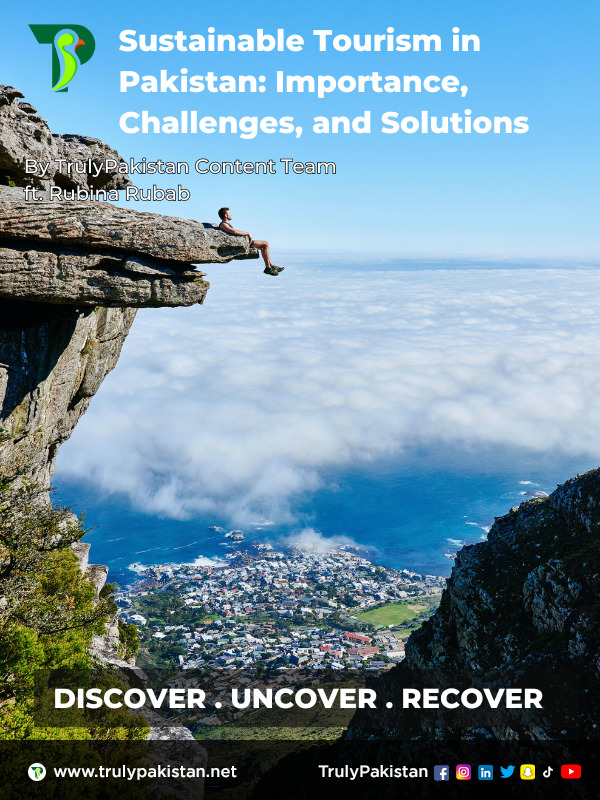
Pakistan’s tourism industry rocked by climate change
With temperatures 9°C above normal, Lahore’s tourism sector – accustomed to foreign visitors until the end of May – has been shell-shocked in recent months.

Lahore, Pakistan – Tour guide Adil Lahorei was told by his clients from Eastern Europe that it was time to head north immediately as temperatures hit 40 degrees Celsius in the capital city of Punjab state.
In May, Pakistan witnessed its hottest April in 61 years . March had been the ninth driest since 1961. The heatwave meant Lahore’s traditional springtime had already begun betraying elements of peak summer.
Keep reading
How much is climate change to blame for heatwaves in south asia, will politicians listen to climate change warnings, ‘who’s talking climate change now’ energy producers say, climate change forcing zimbabwean girls into sex work.
“Usually the travel itinerary for foreign tourists includes staying for a few days in Lahore,” Adil told Al Jazeera. “Some even head down to southern parts of Punjab, and then they leave for the north after a week or so. But this year guests who arrived in April and even March wanted to leave for the mountains right away.”
Pakistani authorities issued warnings that temperatures up to nine degrees Celsius above normal were expected. As a result, Lahore’s tourism industry – accustomed to foreign visitors until the end of May – was shell-shocked.
While rising temperatures have pushed visitors out of Lahore, they are being increasingly lured to the north not only owing to the cool weather, but also because glaciers melting early in the season mean tourist attractions opening faster than usual. When passes such as Babusar, Deosai, and Khunjerab become passable, countless lakes, parks and other scenic sites are accessible to tourists.
“It used to be unheard of for Khunjerab Pass to be open this time of the year. But due to global warming, the tourist season for the northern areas is starting sooner. Meanwhile, I only have a single tourist query for Lahore for the summer,” Adil said.
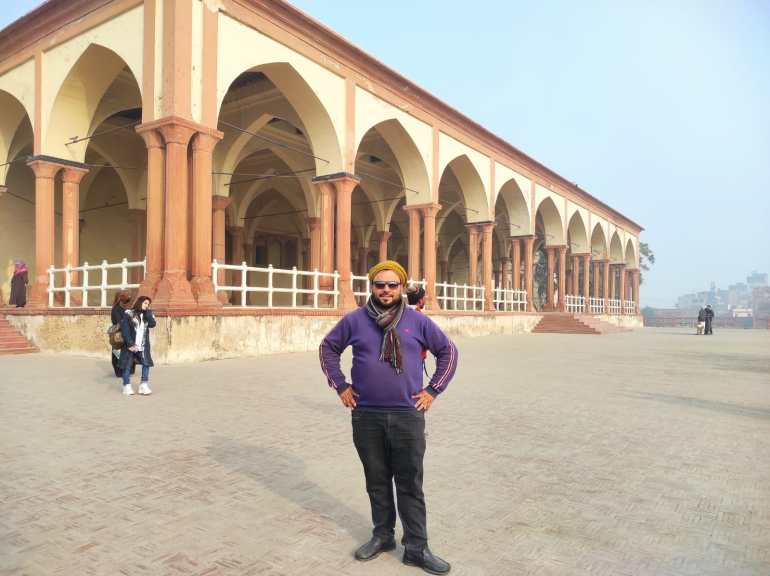
Knockout punch for Pakistan
Lahore, Pakistan’s second-largest city and 25km (15 miles) from the Indian border, has been a cultural hub for centuries, with architectural heritage giving hat tips to the British and the Mughals among the many rulers to have governed this much-coveted land. However, the decades-old quest of global travellers to explore Lahore’s rich history has been hit by one crisis after another.
After the September 11 attacks on the United States, the city – like the rest of the country – was hit by a wave of deadly attacks. After nationwide military operations, some semblance of security returned, and it brought along an influx of tourists.
“Tourism had begun growing in Pakistan and especially in Lahore at the end of the last decade. But then COVID-19 struck,” Adil said.
While the global tourism industry was jolted by the coronavirus pandemic, it was yet another knockout punch for Pakistan, which had only just begun its recovery. Despite the country’s relative success in countering COVID-19, the pandemic also brought a climate wake-up call for Lahore.
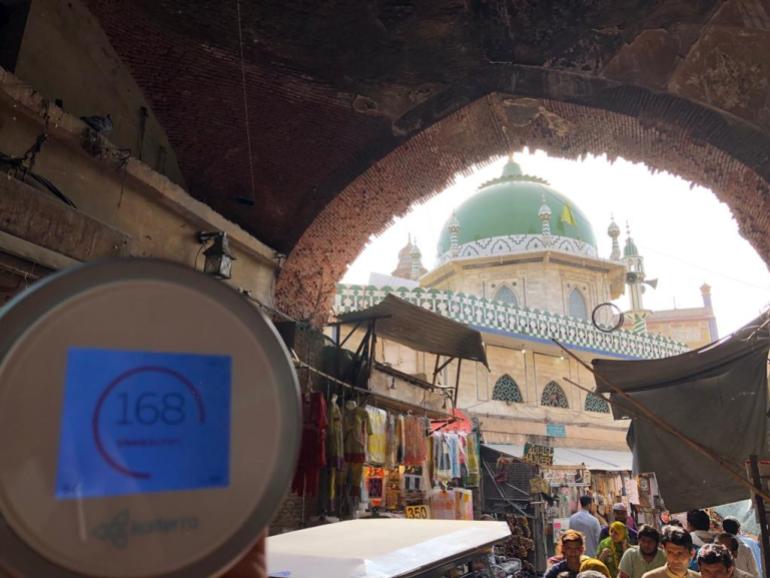
‘Most polluted city’
Clearer skies witnessed during lockdowns underlined what the daily industry-transportation churn was doing to the city, where an annual smogfest renders the air unbreathable during the bridge between autumn and winter. Tourism, naturally, takes a hit when Lahore becomes the world’s most polluted city in November and December.
“In case anyone wants to look at harmful impacts of climate change and environmental degradation, Lahore is an excellent example,” said Tauqeer Qureshi, former director of Punjab’s Environmental Protection Department.
Qureshi told Al Jazeera that the failure to implement environmental regulations and a lack of political will continue to exacerbate Pakistan’s environmental troubles and, in turn, its struggles with tourism.
Environmentalist Saima Baig said Lahore’s plight cannot be corrected as industrial emissions, the burning of crop residue, brick kilns and general waste continue to go unchecked.
“All of these can be reversed with good environmental policies that fine industries for emissions, work with farmers to stop them from burning fields and find alternatives, and a more efficient and effective waste management policy,” she told Al Jazeera.
“Vehicle maintenance and promoting electric vehicles should be part of the country’s overall climate policy. While solar energy is being promoted now, it is essential to look into other renewable technologies like wind energy and even wave energy [to address climate change].”
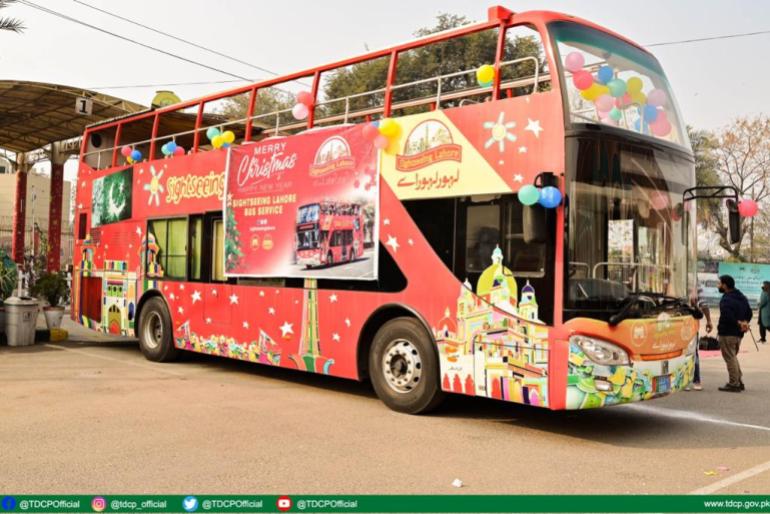
‘A green revolution’
Nothing illustrates Lahore’s climate crisis better than the upper deck of the hop-on hop-off city tour buses run by the Tourism Development Corporation of Punjab (TDCP).
Abid Shaukat, TDCP’s public relations officer, said ticket sales for the double-decker bus are impacted by Lahore’s multipronged environmental challenges.
“The open-air upper deck is where you get the best view. But as early as March, many find the upper heck too hot to sit in and instead prefer the lower, closed, air-conditioned deck,” Shaukat told Al Jazeera. “Similarly, when there’s smog many don’t want to be exposed to it on the top deck.”
Tourism development expert Ashfaq Khan said when he was studying the sector in Europe four decades ago, it was taught that weather is the primary factor.
“But the urban planning in Lahore continues to be carried out as if to deliberately aggravate the impacts of global warming,” Khan said.
“They’re replacing the green countryside with more and more cement. I feel embarrassed every time I tell my guests, ‘Welcome to the City of Gardens’,” he told Al Jazeera.
“Everyone Pakistani should plant a tree. The country needs a green revolution … Tourism, or anything in the country for that matter, will not prosper if we don’t get our priorities straight.”
Pakistan Tourism: Challenges and Strategies for Sustainable Growth
Tourism is an economic backbone for every country, including Pakistan, and many countries across the world are expanding their economic growth through tourism. Tourism is becoming more popular in Asia, particularly in Malaysia, Singapore, Hong Kong, and Thailand, as a result of increased money and accessibility to the rest of the globe. Tourism is a significant source of foreign currency profits. Tourists spend money on lodging, food, transportation, and a variety of other products and services, generating cash for the country. This money may be utilized to fund different development initiatives and projects, as well as to increase foreign exchange reserves. The tourist business may employ a wide spectrum of individuals, from hotel personnel to tour guides to craftsmen and taxi drivers. This helps to reduce unemployment and poverty, particularly in developing countries. Pakistan is in South Asia, bordering India to the east, Afghanistan to the west, and Iran to the northwest. China to the north and the Arabian Sea to the south. Its diversified terrain, which includes mountains, plateaus, desert, and a coastline along the Arabian Sea, contributes to the country’s tourist potential. Pakistan boasts some of the world’s highest peaks, including K2, the world’s second highest mountain, and the breathtaking splendour of the Karakorum Highway. Gilgit Baltistan is famous for its breathtaking scenery, including the Hunza Valley, skardu, and deosai. Swat Naran and Kagan are well-known for their lush vegetation valleys and gorgeous lakes. Thar offers a unique desert experience, Kashmir valleys appear to be heaven on earth, and the coastline along the Arabian Sea has lovely beaches. Pakistan contains several historical and cultural landmarks, such as Mohegan-Daro and Taxila. Pakistan has a diversified animal population, including snow leopards, markhor, and various birds. Tourism has immense potential in Pakistan, but owing to poor infrastructure and safety concerns, the country is not benefiting. The tourist sector is complicated for several reasons. There are several issues that must be addressed. Uncontrolled tourism can harm the environment by causing pollution and destroying natural attractions. It is difficult to balance tourism expansion with environmental conservation. Numerous tourists endanger cultural heritage and traditions. Many tourist sites are seasonal, causing income for businesses and workers to fluctuate. Political instability and economic issues might have an influence on the country’s overall tourist environment. The Pakistan tourism sector has frequently lacked efficient marketing and promotion efforts; many tourism service providers lack sufficient training and standards; and the visa process for other nations might discourage visitor potential and make travel more difficult. Pakistan competes with neighboring countries in luring tourists away from more established attractions. Thing to think that how we can face these challenges how to make Pakistan a tourist hub and generate income from tourism industry. What are effective solutions to improve tourism industry in Pakistan. How we can promote the industry and make proper marketing and policies. Invest In improving security measures are tourist destinations also presence of law enforcement agency Ain the key tourist areas. Explore public private partnership to finance infrastructure projects. Implemented sustainable development practices to minimize environmental impact. enforce strict environmental regulations. promote eco-friendly tourism and educate tourist representative behavior established protected areas and conservation’s programs to preserve natural attractions. It is important to consider how we may overcome these problems in order to make Pakistan a tourist destination and earn revenue from the tourism business. What are the most effective ways to strengthen Pakistan’s tourist industry? How can we promote the sector and create appropriate marketing and policies? Invest in increasing security measures at tourist locations, as well as the presence of law enforcement agencies in high-traffic areas. Investigate public-private partnerships to fund infrastructure initiatives. To reduce environmental effects, we used sustainable development strategies. Impose stringent environmental rules. To maintain natural attractions, protected areas and conservation initiatives were formed to encourage eco-friendly tourism and teach visitor representative behavior. Create and implement policies to safeguard cultural and historical places and traditions. Increase cultural awareness among tourists through education and guidelines.Local communities were involved in conserving and promoting the culture.Spend money on focused marketing strategies.To promote tourism, use digital marketing and social media to reach a worldwide audience, and cooperate with travel companies, influencers, and media sources.Implement tourism professional training and certification programs.simplifying visa procedures and encouraging visa on arrival To reduce seasonal variations, provide year-round activities and events. Encourage businesses to give discounts during off-seasons. carries out a community-based tourism strategy in which locals are actively involved. Make certain that a percentage of tourism earnings goes to local communities. Communities were involved in the decision-making process governing tourist development. invest in adventure tourism infrastructure Tracking routes and safety procedures, for example, help to guarantee safety requirements. Maintain political stability and establish an investment-friendly climate. To minimize insecurity, promote economic growth and job possibilities. Encourage travel bloggers and influencers to highlight good aspects of Pakistan. Collaborate with neighboring countries to cross boundaries. Focus on distinctive offerings that set Pakistan apart from competition.
Pakistan should follow suit right away. The tourist ministry should put up the necessary effort. The tourist industry may generate significant money and contribute to the economy of Pakistan with the participation of government ministries and business sectors, as well as the assistance of local people. Prioritizing sustainable and ethical tourism practices is critical to ensuring long-term benefits. The government should seek technical advice from think tank groups and policymakers in order to provide appropriate and effective recommendations for improving and profiting from this business.
© 2023 SDPI. All Rights Reserved Design & Developed by NKMIS WEB Unit
- Afghanistan
- Daily Cartoon
- Ramadan 2024
Home Article Challenges to the tourism industry of Pakistan | By Adv Mujeeb-ur-Rehman
Challenges to the tourism industry of Pakistan | By Adv Mujeeb-ur-Rehman

Challenges to the tourism industry of Pakistan
THERE is no denial of the fact that tourism carries a huge potential and advantages for Pakistan.
Pakistan’s Prime Minister Imran Khan rightly said that tourism will change the fate of Pakistan, as it carries huge potential and it will boost the economy and will offer employment opportunities.
He quoted the example of Switzerland, Which is half of our northern area, but still generates revenue of 80 billion U.S. dollars. Where is Pakistan which is more natural? Beautiful areas generate Less than it.
There are many opportunities available in Pakistan which can boost the tourism in Pakistan but at the same time there are many challenges which cause hindrances in promotion of the tourism industry.
These challenges include inadequate infrastructure, poor security situation, lack of government’s will, efficient policies, and at the same time, inefficient hotels and restaurants.
Lack of adequate infrastructure is one of the biggest hindrances in the way of promoting tourism. Adequate infrastructure include road network, train tracks, airports, supply of gas and electricity, availability of network and some other amenities.
Without these, it is nearly impossible to promote the tourism industry. Same in the case of Pakistan where several tourist destinations don’t have adequate infrastructure. Our tourism industry is not evolving.
Access to these amenities in the hilly areas is very dangerous but not impossible because of land sliding and inadequate infrastructure. The poor security system in the last decades of Pakistan has discouraged tourism as many foreign tourists were killed in terrorist attacks.
One of the famous incidents was at the boot camp of Nanga Parbat, where foreign tourists Were killed, this was the particular.
Terrorist activity, but in general terrorism activities, Many tourists have Lost their life. These terrorist activities have brought a bad name to Pakistan and it is held responsible for the downfall of the tourism industry in Pakistan.
Another factor in the downfall of tourism in Pakistan is the lake of Will of the government. No government had made any effective efforts for the promotion of tourism.
Government has always ignored the tourism industry. This is the reason as a low budget is allocated to the tourism industry in every fiscal year.
There are so many efforts which should have been taken by the government, which include adequate infrastructure, tourist friendly visas, and policies. Providing better security to tourists, Promotion of northern areas in the media.
Another hindrance in the way of promoting the tourism industry is the limited number of hotels and restaurants in the tourist destinations.
Likewise in northern areas there are many beautiful places which are the best option for tourism. But due to limited hotel and accommodations facilities of international level over there Tourist are hesitating to visit those spots.
If the government wants to attract tourists to these spots then the government must provide these facilities at an international level, otherwise it will remain a hurdle in the way of promotion of the tourism industry.
Roads which lead to the tourist spots must be built. Railway tracks must be built where necessary. Governments focus must be on the comfortable and safe access of tourist spots for foreign tourists. Moreover, the standard of hotels and restaurants must be uplifted.
Number of hotels must be increased. Another step which should be taken by the government is that the Government must formulate such policies in order to promote tourism which should protect the rights of tourists.
Tourists are being harassed and are being cheated. This thing portraits a bad image of Pakistan. And strict action must be taken by the government institutions, including police in case of infringement of the rights of tourists.
Improving security situations must be the priority of the government. For over decades Terrorism played havoc with all the sectors of economy which include tourism which was most affected.
Now security situations have improved and terrorism has been eradicated to a large extent.
However, the government still needs to be vigilant and conduct intelligence led operations to prevent any such untoward incident That not only discourages tourism, but also portrays the bad image of a country. Awareness regarding the tourist destinations in Pakistan must be launched in the media. It will help to uplift the tourism industry.
So it can be stated that promoting tourism is in the interest of Pakistan, although there are certain hurdles in the way, but these can be overcome by effective measures.
It is hoped that if these measures are taken and implemented by the government, the true potential of tourism can be seen which will bring about a revolution in improving the economy and creating business and employment opportunities in Pakistan.
—The writer is an advocate, based in Karachi.
Related Posts

Governing Pakistan is difficult, not impossible!

China’s economy to boost in 2024
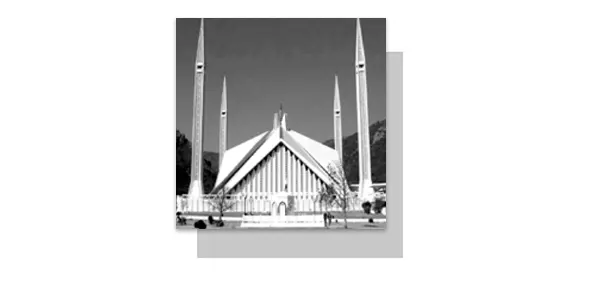
Islamic spirituality and mysticism (Sufism)

Involvement of Indian RAW in the murder plots of Sikh leaders
A race against time | By Manzoor-ul-Haq
Tackle the impossible . . !
Recommended.
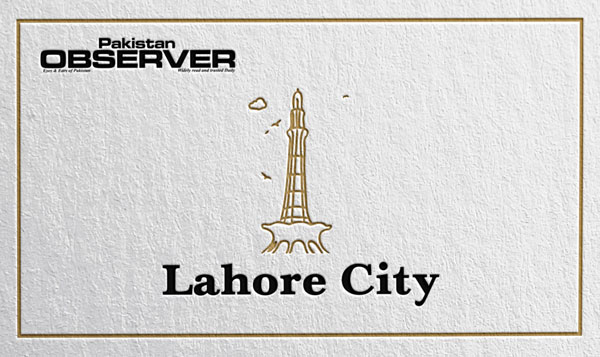
Measures under way to make Punjab drug-free
E-pay punjab collects rs 400b revenue.

Ghani condemns terrorism, calls for global unity

Fazl announces to boycott by-elections

Pakistan Day 2024: President, PM urge nation to follow footsteps of founding fathers

Your source for latest Pakistan, world news. Stay updated on politics, business, sports, lifestyle, CPEC, and breaking news. Accurate, timely, and comprehensive coverage.
Popular Category
Information.
- Terms of use
- Advertise With Us
Download Our App
Download our Android app for the latest Pakistan and world news in just a tap. Stay informed, anywhere, anytime.

© 2023 All rights reserved | Pakistan Observer
- Election 2024
- Tax Calculator
- Prayer Timings
- Advertise with us
Promoting Tourism in Pakistan: Challenges and Opportunities
Pakistan is a land of diverse natural beauty, from the mighty Himalayas to the serene beaches of the Arabian Sea. Its landscape is adorned with snow-capped mountains, lush green valleys, and cascading waterfalls.
The colorful culture, vibrant cities, and historic landmarks also add to the beauty of this South Asian country. With its rich heritage and breathtaking scenery, Pakistan holds a lot of potential for tourism.
According to the World Travel and Tourism Council , the direct contribution of travel and tourism to Pakistan’s GDP in 2016 was US$7.6 billion (PKR 793.0 billion), constituting 2.7% of the total GDP. By 2025, the government predicts tourism will contribute ₨1 trillion (US$6.0 billion) to the Pakistani economy. Wikipedia
This single report stands alone in underscoring the importance of tourism for any country.
Tourism is one of the best ways of generating revenue for any country. Apart from generating revenue tourism helps in the promotion of the culture and civilization of a particular country.
Since, Pakistan is rich in diverse cultures, civilizations, and traditions, with beautiful landscapes, heavenly sights, and historical places; it holds a great tourism potential, which regrettably remained elusive.
Pakistan is a country that has the second-highest peak in the world known as K2. Contrary to its north which is among the coldest regions of the world, Pakistan has the warmest known places in its south. It is a blessed land with four seasons. From mountains to valleys, from lush green areas to deserts, from dense forests to waters, Pakistan is rich in all natural resources.
Moreover, Pakistan has a plethora of historical, religious, archeological, and adventurous sites that could attract a large number of tourists from around the world.
Regrettably, Pakistan failed to cash its full potential in the tourism industry owing to multifarious factors and challenges that impede or have always impeded the country from becoming the world’s top or best tourist destination.
Challenges to Tourism in Pakistan
Let’s now talk about some of the potential challenges and obstacles that mire Pakistan from becoming the world’s best tourist spot.
1. Terrorism has impacted the tourism industry in Pakistan
Terrorism has severely impacted the tourism industry of Pakistan. It is due to the surge of terrorism post 9/11, that the country was marked ‘unsafe’ internationally which ultimately tarnished the image of Pakistan globally.
The frequent incidents of bomb blasts, targeted killings, drone attacks, and bloodshed throughout the country remained a spoiler for the growth of Pakistan’s tourist industry and economy.
Thus, tourists from across the world wanted to visit Pakistan but remained reluctant due to the prevailing law and order issues in the country then.
Albeit, the situation in Pakistan has considerably improved now, and the tourism industry in Pakistan has revived to a great extent. Still, much needs to be done.
2. Poor Connectivity Infrastructure
As there is no denying the fact that roads and connectivity infrastructure plays a vital role in the promotion of tourism in any country.
The situation of roads and connectivity infrastructure in Pakistan thoroughly remained compromised due to reasons like budgetary constraints, corruption , etc. No government paid heed to connect remote areas with the rest of the country. Thus, a number of potential tourist hotspots remained thoroughly out of reach.
For example, Pakistan owns the most beautiful sights and landscapes in its north, known as the northern areas which have a great potential of attracting gazillions of tourists from across the world, but unfortunately, the underdeveloped Northern areas failed to cash their tourist potential.
Similarly, we have the Kashmir region that is known as ‘the heaven on the earth’, but the lack of connectivity and the poor conditions of the roads remained major obstacles in the way of the promotion of tourism in Kashmir.
The beautiful deserts of Sindh and Baluchistan failed to attract tourists owing to a lack of connectivity, while in many Arab regions, similar deserts are famous as their tourist hotspots.
3. Government Negligence to Tourist Places
The third prominent factor behind the poor state of tourism in Pakistan is sheer negligence on part of the government. Subsequent governments in the past paid no heed to the development of tourist places by building hotels or those potential places for tourist resorts that could attract locals and foreigners.
Usually, the tourists who travel have no other option than to camp or self-cooking for themselves, and not everyone likes it. Thus, hotels or resorts are necessary conditions to turn beautiful sites to hit tourist destinations.
Take the example of ‘Tolipeer’ which is one of the most famous tourist spots in the Pakistani part of Kashmir. The place itself reflects government negligence. The frequent littering of the place, coupled with poor conditions of the roads and lack of hotels or dwellings for tourists reflect government negligence.
Similarly, the whole ‘Neelum valley’ in Kashmir, famous for its heavenly beauty, speaks volumes of negligence on part of the government. Ultimately, it discourages not only the foreigners but the locals too from their endeavors to explore the beauty of these places and bring it to the limelight.
4. Multiple Social Challenges
Another prominent challenge that demands serious attention is the treatment meted out to non-native or foreign tourists by native people of the region.
Generally speaking, the overall Pakistani people are noble, hospitable, and caring. But it is not always the fact. People are generally self-centered when it comes to economic interests. Similar is the case with the people belonging to most of the tourist places.
For example, go to northern areas without a guide and you will find local people there trying their best to charge you heavily for their services. The exorbitant prices set for the services and products are one issue that most tourists get to face.
The second issue is the behavior of people in some of the regions like Murree, where a number of cases and incidents of tourists getting beaten by the natives have surfaced on social media. What image of Pakistan and its society does it portray to the rest of the world? Would it encourage or discourage foreigners to visit Pakistan?
5. Negative Role of Pakistani Media
Lastly, the role of the media has also added fuel to the fire. The way the media has projected the image of Pakistan by merely highlighting the accidents, blasts, bloodshed, and other social issues has tarnished the image of Pakistan globally.
There was a time when beautiful sites and places in Pakistan were shown to the world through television programs. But at that time, the media was state-controlled. After the media got liberalized, it started promoting whatever it wanted to, without actually realizing what impacts that would have on the image of the state.
Thus, the negative role played by Pakistani media has also hurt the tourism industry of Pakistan.
Opportunities for Tourism Industry in Pakistan
Having discussed a few prominent challenges to the tourism industry in Pakistan, it is also pertinent to shed some light on the potential opportunities for the growth of tourism in Pakistan. Following is a quick insight into these opportunities:
1. Pakistan is increasingly becoming Peaceful
As earlier we have highlighted how terrorism and security issues in Pakistan have negatively impacted tourism, today it is a well-acknowledged fact that Pakistan is largely becoming a peaceful and safe place for all and sundry (thanks to the security forces of Pakistan).
Thus, the label of ‘unsafe place’ is no more valid and the world has acknowledged that Pakistan is no more a no-go area.
The tourist places that were unsafe in the past, esp. the places in the northern areas, are now safe not only for men or the local people but also for women and foreigners.
Recently, a female foreigner, namely ‘Eva Zu Beck’ has traveled across the length and breadth of Pakistan all alone. She has left the country safe and sound, with many positive memories that she talks about on her social media accounts. Beyond doubt, her tourism stories have encouraged others to visit the beautiful landscapes of Pakistan.
2. Government’s will to Revive Tourism in Pakistan
Another opportunity for the growth of tourism in Pakistan that has largely remained missing earlier is; the present government of PTI is determined to fully revive the tourism industry in Pakistan.
The Prime Minister of Pakistan has many times talked at length about the potential of tourism in Pakistan. The government is determined to take every step to promote tourism in Pakistan.
For example, easing visa policies for tourists, facilitating them in the country, provision of guidelines and security to them during traveling, etc. are all well-cherished steps by the present government.
3. Power of Social Media
The role played by social media in the promotion of tourism in Pakistan is unparalleled. Today, people are more active in highlighting attractive, beautiful sites in Pakistan on various social media platforms.
A number of blogs, vlogs, and tourism groups are very active today in projecting a positive image of Pakistan globally and promoting tourism in Pakistan. Social media has actually overshadowed the negative role of Pakistani electronic media that we have earlier discussed.
4. CPEC: Enhanced Connectivity
Earlier we have highlighted the issue of poor connectivity infrastructure; with CPEC and its projects of roads and highways, the tourism industry will gain a quick boost in Pakistan.
The enhanced connectivity in Pakistan due to rail and road projects will bring the remote areas of Pakistan into the mainstream. Access to different tourist destinations will become easier. Moreover, the spread of internet services under CPEC projects will further help in bringing the unexplored and undiscovered beauty of Pakistan into the limelight.
5. The Introduction of E-governance
Since the government of Pakistan has introduced e-governance i.e. ‘Pakistan Citizen Portal’; it will be helpful in reporting the potential social problems and mismanagements across the country. As told earlier about economic exploitation, such cases can be reported to the authorities with just one click. Thus, the use of e-governance can help tourists in reporting any sort of untoward incident.
To conclude, tourism in Pakistan is getting a fast revival which will not only help Pakistan in generating revenues but also be helpful in adding to the country’s soft power.
Pakistan has great potential to compete with the world’s top tourist destinations with its unmatched beauty and diversity in its people, culture, and traditions.
You may also like

How to Obtain an English Marriage Certificate in...

How To Get A Marriage Registration Certificate (MRC)...

Starlink Satellite Broadband is Now Officially...

Best Insurance Companies in Pakistan

PTI launched Na Manzoor Website for Donations &...
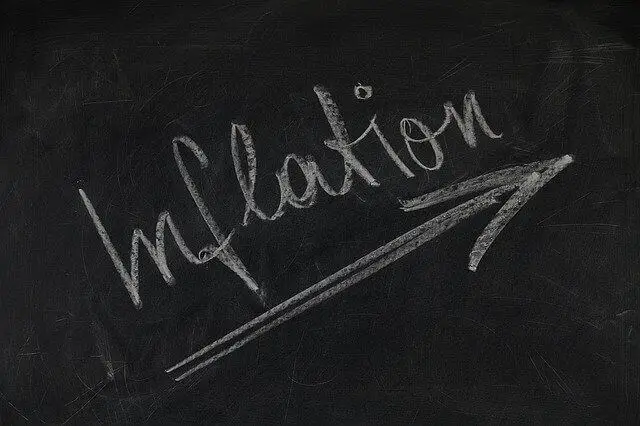
Inflation in Pakistan | Reasons and Solutions
About the author.
A versatile human being with a passion for reading and writing - always striving for growth, living in the moment but trying to keep pace with the evolving world.
Very fruitful elaboration regarding tourism in Pakistan
MashAllah you explained well but you didn’t discuss about the beautiful places of Gilgit Baltistan at all.
Thanks very nice blog!
[…] tourism potential can be cashed. The government needs to utilize resources and make policies to boost tourism which can help to strengthen the soft image of […]
Leave a Comment X
Save my name, email, and website in this browser for the next time I comment.

Handbook of Technology Application in Tourism in Asia pp 877–897 Cite as
Use of Technology in Tourism: Challenges in Pakistan
- Kalsoom B. 2 &
- Mehtab Alam 3
- Reference work entry
- First Online: 10 July 2022
801 Accesses
Traveling is still revolving around the meaningful human interaction, among people, stakeholders, and the tourists. These tourists visit to sites through the travelers as technological advancement proves to be facilitative than creating impediments. The incident of evocative development of change in the traveling around the globe is because of increase businesses interdependence and the client’s adoption of technologies. It is also meeting the expectations of tourists and improving operational efficiencies. Further the movement of the tourism industry is continuous with the increase use of technology where commentators have categorized this transformative power in various categories. From the availability of the Internet to the digital divide and provisions of online cabs, there are compelling arguments about the presence of such amenities that boost the services of technology for exploring avenues in the tourism sector. As technology and tourism are accelerating in the same stride, their services can develop a shifting impact on many important facades of developing countries. In this regard, the well-thought-out study while using technology in tourism industry in Pakistan employed survey approach to deepening the knowledge about role of tourism in integrating resources and exchange services. The approach used is convenient for searching power tools of completing the tourism destinations. It shows the application of effective scientific knowledge of technology that is influential in maintaining the tourism discord. However, the challenges reflect those disparities are still existing in excess of the technology-based services, operative use of informatics, and the skills pertaining to computing devices. The potential of tourism industry in Pakistan is acknowledged and well supported by reputable organizations/stakeholders connected with this industry. It is recommended that employing the technological tools in the industry would be a positive use in tourism sector would be positive recipient for actors and services belongs to the industry. This will also reshape the digital tools and their valuable services for reducing the challenges of the hospitality and integration of technology into the tourism sector.
- Communications
This is a preview of subscription content, log in via an institution .
Buying options
- Available as PDF
- Read on any device
- Instant download
- Own it forever
- Available as EPUB and PDF
- Durable hardcover edition
- Dispatched in 3 to 5 business days
- Free shipping worldwide - see info
Tax calculation will be finalised at checkout
Purchases are for personal use only
Adeola, O., & Evans, O. (2019). Digital tourism: Mobile phones, Internet and tourism in Africa. Tourism Recreation Research, 44 (2), 190–202.
Article Google Scholar
Adukaite, A., van Zyl, I., & Cantoni, L. (2016). The role of digital technology in tourism education: A case study of South African secondary schools. Journal of Hospitality, Leisure, Sport & Tourism Education, 19 , 54–65.
Aman, J., Abbas, J., Mahmood, S., Nurunnabi, M., & Bano, S. (2019). The influence of Islamic religiosity on the perceived socio-cultural impact of sustainable tourism development in Pakistan: A structural equation modeling approach. Sustainability, 11 (11), 3039.
Ardito, L., Cerchione, R., Del Vecchio, P., & Raguseo, E. (2019). Big data in smart tourism: Challenges, issues and opportunities. Current Issues in Tourism, 22 (15), 1805–1809.
Arshad, M. I., Iqbal, M. A., & Shahbaz, M. (2018). Pakistan tourism industry and challenges: A review. Asia Pacific Journal of Tourism Research, 23 (2), 121–132.
Asongu, S., & Odhiambo, N. M. (2019). Tourism and social media in the world: An empirical investigation. Retrieved from: https://bit.ly/3lhZNXE . Accessed: the 21 July 2020.
Assaker, G., Hallak, R., & El-Haddad, R. (2020). Consumer usage of online travel reviews: Expanding the unified theory of acceptance and use of technology 2 model. Journal of Vacation Marketing, 26 (2), 149–165.
Beed, R. S., & Sarkar, S. (2017). A study on the use of information and communication technology in tourism. In 2017 international conference on advances in computing, communications and informatics (ICACCI) (pp. 1737–1744). IEEE. The 13th September.
Chapter Google Scholar
Benckendorff, P. J., Xiang, Z., & Sheldon, P. J. (2019). Tourism information technology . CABI.
Book Google Scholar
Buhalis, D., & Yen, E. C. S. (2020). Exploring the use of chatbots in hotels: Technology providers’ perspective. In J. Neidhardt & W. Wörndl (Eds.), Information and communication technologies in Tourism 2020: Proceedings of the international conference in Surrey (pp. 231–242). Springer, the 08th-10th January.
Chopdar, P. K., Korfiatis, N., Sivakumar, V. J., & Lytras, M. D. (2018). Technological shopping apps adoption and perceived risks: A cross-country perspective utilizing the unified theory of acceptance and use of technology. Computers in Human Behavior, 86 , 109–128.
Dadwal, S., & Hassan, A. (2015). The augmented reality marketing: A merger of marketing and technology in tourism. In N. Ray (Ed.), Emerging innovative marketing strategies in the tourism industry (pp. 78–96). IGI Global.
Dajani, D. (2016). Using the unified theory of acceptance and use of technology to explain E-commerce acceptance by Jordanian travel agencies. Journal of Comparative International Management, 19 (1), 99–118.
Google Scholar
Disztinger, P., Schlögl, S., & Groth, A. (2017). Technology acceptance of virtual reality for travel planning. In R. Schegg & B. Stangl (Eds.), Information and communication technologies in tourism 2017 (pp. 255–268). Springer.
Dong, D., Xu, X., & Wong, Y. F. (2019). Estimating the impact of air pollution on inbound tourism in China: An analysis based on regression discontinuity design. Sustainability, 11 (6), 1682.
Drosos, D., Chalikias, M., Skordoulis, M., Kalantonis, P., & Papagrigoriou, A. (2017). The strategic role of information technology in tourism: The case of global distribution systems. In V. Katsoni, A. Upadhya, & A. Stratigea (Eds.), Tourism, culture and heritage in a smart economy. Springer proceedings in business and economics (pp. 207–219). Springer.
Font, X., & Mccabe, S. (2017). Sustainability and marketing in tourism: Its contexts, paradoxes, approaches, challenges and potential. Journal of Sustainable Tourism, 25 (7), 869–883.
Garay, L., Font, X., & Corrons, A. (2019). Sustainability-oriented innovation in tourism: An analysis based on the decomposed theory of planned behavior. Journal of Travel Research, 58 (4), 622–636.
Garrido-Moreno, A., & Lockett, N. (2016). Social media use in European hotels: Benefits and main challenges. Tourism & Management Studies, 12 (1), 172–179.
Haq, F., & Medhekar, A. (2019). Challenges for innovative transformation in heritage tourism development in India and Pakistan. In S. Srivastava (Ed.), Conservation and promotion of heritage tourism (pp. 127–154). IGI Global.
Honarzade, M., Mahmoudinia, M., & Anari, M. S. (2018). Identifying and ranking influencing factors in using RFID technology in tourism industry via the use of structural equation modeling. International Journal of Information Systems in the Service Sector (IJISSS), 10 (4), 1–20.
Huang, R., Wang, H., Liu, H., Zhao, H., & Yang, H. (2020). Research on the calculation method of carbonate contents from logging data based on SPSS. Energy Sources, Part A: Recovery, Utilization, and Environmental Effects, 42 (5), 543–553.
Huang, W. X., & Li, M. (2019). Analysis of main factors affecting the development of tourist areas based on SPSS data. Computer Engineering & Software, 1 , 32.
Huang, Y. C., Backman, K. F., Backman, S. J., & Chang, L. L. (2016). Exploring the implications of virtual reality technology in tourism marketing: An integrated research framework. International Journal of Tourism Research, 18 (2), 116–128.
Hussain, T., Li, B., & Wang, D. (2018). What factors influence the sustainable tour process in social media usage? Examining a rural mountain region in Pakistan. Sustainability, 10 (7), 2220.
Jeong, M., & Shin, H. H. (2019). Tourists’ experiences with smart tourism technology at smart destinations and their behavior intentions. Journal of Travel Research , 0047287519883034.
Khatri, I. (2019). Information technology in tourism & hospitality industry: A review of ten years’ publications. Journal of Tourism and Hospitality Education, 9 , 74–87.
Kim, D., & Kim, S. (2017). The role of technological technology in tourism: Patents, articles, news, and technological tour app reviews. Sustainability, 9 (11), 2082.
Lai, C., Wang, Q., Li, X., & Hu, X. (2016). The influence of individual espoused cultural values on self-directed use of technology for language learning beyond the classroom. Computers in Human Behavior, 62 , 676–688.
Lemenkova, P. (2019). Numerical data modelling and classification in marine geology by the SPSS statistics. International Journal of Engineering Technologies, 5 (2), 90–99.
Li, S. C., Robinson, P., & Oriade, A. (2017). Destination marketing: The use of technology since the millennium. Journal of Destination Marketing & Management, 6 (2), 95–102.
Manzoor, F., Wei, L., & Asif, M. (2019). The contribution of sustainable tourism to economic growth and employment in Pakistan. International Journal of Environmental Research and Public Health, 16 (19), 3785.
McDonald, S., Vieira, R., & Johnston, D. W. (2020). Analysing N-of-1 observational data in health psychology and behavioural medicine: A 10-step SPSS tutorial for beginners. Health Psychology and Behavioral Medicine, 8 (1), 32–54.
Melkić, S., & Čavlek, N. (2020). The impact of blockchain technology on tourism intermediation. Tourism: An International Interdisciplinary Journal, 68 (2), 130–143.
Navío-Marco, J., Ruiz-Gómez, L. M., & Sevilla-Sevilla, C. (2018). Progress in information technology and tourism management: 30 years on and 20 years after the Internet-Revisiting Buhalis& Law’s landmark study about etourism. Tourism Management, 69 , 460–470.
Niazi, A. A. K., Qazi, T. F., & Basit, A. (2019). What hinders to promote tourism in Pakistan? Using binary matrices for structuring the issue. Review of Economics and Development Studies, 5 (4), 881–890.
Nizam, H. A., Zaman, K., Khan, K. B., Batool, R., Khurshid, M. A., Shoukry, A. M., Sharkawy, M. A., Aldeek, F., Khader, J., & Gani, S. (2020). Achieving environmental sustainability through information technology: “Digital Pakistan” initiative for green development. Environmental Science and Pollution Research, 27 , 10011–10026.
Nunkoo, R., Seetanah, B., Jaffur, Z. R. K., Moraghen, P. G. W., & Sannassee, R. V. (2020). Tourism and economic growth: A meta-regression analysis. Journal of Travel Research, 59 (3), 404–423.
Pai, C. K., Wang, T. W., Chen, S. H., & Cai, K. Y. (2018). Empirical study on Chinese tourists’ perceived trust and intention to use biometric technology. Asia Pacific Journal of Tourism Research, 23 (9), 880–895.
Pallant, J. (2020). SPSS survival manual: A step by step guide to data analysis using IBM SPSS . Routledge.
Pan, S. Y., Gao, M., Kim, H., Shah, K. J., Pei, S. L., & Chiang, P. C. (2018). Advances and challenges in sustainable tourism toward a green economy. Science of the Total Environment, 635 , 452–469.
Rahi, S., Ghani, M. A., & Ngah, A. H. (2019). Integration of unified theory of acceptance and use of technology in Internet banking adoption setting: Evidence from Pakistan. Technology in Society, 58 , 101120.
Rana, I. A., & Bhatti, S. S. (2018). Lahore, Pakistan–urbanization challenges and opportunities. Cities, 72 , 348–355.
Rasheed, R., Meo, M. S., Awan, R. U., & Ahmed, F. (2019). The impact of tourism on deficit in balance of payments of Pakistan: An application of bounds testing approach to cointegration. Asia Pacific Journal of Tourism Research, 24 (4), 325–332.
Scarles, C., Casey, M., & Treharne, H. (2016). Enriching the visitor experience: Augmented reality and image recognition in tourism. In M. Scerri & L. K. Hui (Eds.), CAUTHE 2016: The changing landscape of tourism and hospitality: The impact of emerging markets and emerging destinations (pp. 1177–1184). Sydney.
Sharif, A., Afshan, S., & Nisha, N. (2017). Impact of tourism on CO2 emission: Evidence from Pakistan. Asia Pacific Journal of Tourism Research, 22 (4), 408–421.
Sharma, P., & Nayak, J. K. (2019). Understanding memorable tourism experiences as the determinants of tourists’ behaviour. International Journal of Tourism Research, 21 (4), 504–518.
Sheikh, A. A., Shahzad, A., & Ishaq, A. K. (2017). The growth of e-marketing in business-to-business industry and its effect on the performance of businesses in Pakistan: Marketing success. International and Multidisciplinary Journal of Social Sciences, 6 (2), 178–214.
Shrestha, D., & Jeong, S. R. (2016). An ICT framework for tourism industry of Nepal: Prospect and challenges. Journal of Internet Computing and Services (JICS), 6 , 113–122.
Swart, M. P. N., Sotiriadis, M. D., & Engelbrecht, W. H. (2019). Investigating the intentions of tourism providers and trade exhibition visitors to use technology: A technology acceptance model approach. Acta Commercii, 19 (1), 1–11.
Syazali, M., Putra, F., Rinaldi, A., Utami, L., Widayanti, W., Umam, R., & Jermsittiparsert, K. (2019). Partial correlation analysis using multiple linear regression: Impact on business environment of digital marketing interest in the era of industrial revolution 4.0. Management Science Letters, 9 (11), 1875–1886.
Ukpabi, D. C., & Karjaluoto, H. (2017). Consumers’ acceptance of information and communications technology in tourism: A review. Telematics and Informatics, 34 (5), 618–644.
Um, T., & Chung, N. (2019). Does smart tourism technology matter? Lessons from three smart tourism cities in South Korea. Asia Pacific Journal of Tourism Research . https://doi.org/10.1080/10941665.2019.1595691
Varga, D. (2019). Analysis of tourism destination management organizations in Hungary. European Journal of Tourism Research, 21 , 148–152.
Vaske, J. J. (2019). Survey research and analysis . Venture.
Wang, D., Xiang, Z., & Fesenmaier, D. R. (2016). Smartphone use in everyday life and travel. Journal of Travel Research, 55 (1), 52–63.
Wang, J., & Johnson, D. E. (2019). An examination of discrepancies in multiple imputation procedures between SAS® and SPSS®. The American Statistician, 73 (1), 80–88.
Weaver, D. B., & Moyle, B. D. (2019). ‘Tourist stupidity’ as a basic characteristic of ‘smart tourism’: Challenges for destination planning and management. Tourism Recreation Research, 44 (3), 387–391.
Wibowo, T. S., & Pratomo, I. (2020). Analysis of Malang City readiness in realizing smart tourism with new integrated E-readiness model. In 2020 international conference on smart technology and applications (ICoSTA) (pp. 1–6). IEEE. The 20th February.
Xiang, Z. (2018). From digitization to the age of acceleration: On information technology and tourism. Tourism Management Perspectives, 25 , 147–150.
Download references
Author information
Authors and affiliations.
Center for Policy Studies, COMSATS University, Islamabad, Pakistan
Riphah International University, Islamabad, Pakistan
Mehtab Alam
You can also search for this author in PubMed Google Scholar

Editor information
Editors and affiliations.
Tourism Consultants Network, The Tourism Society, London, UK
Azizul Hassan
Rights and permissions
Reprints and permissions
Copyright information
© 2022 Springer Nature Singapore Pte Ltd.
About this entry
Cite this entry.
B., K., Alam, M. (2022). Use of Technology in Tourism: Challenges in Pakistan. In: Hassan, A. (eds) Handbook of Technology Application in Tourism in Asia. Springer, Singapore. https://doi.org/10.1007/978-981-16-2210-6_40
Download citation
DOI : https://doi.org/10.1007/978-981-16-2210-6_40
Published : 10 July 2022
Publisher Name : Springer, Singapore
Print ISBN : 978-981-16-2209-0
Online ISBN : 978-981-16-2210-6
eBook Packages : Business and Management Reference Module Humanities and Social Sciences Reference Module Business, Economics and Social Sciences
Share this entry
Anyone you share the following link with will be able to read this content:
Sorry, a shareable link is not currently available for this article.
Provided by the Springer Nature SharedIt content-sharing initiative
- Publish with us
Policies and ethics
- Find a journal
- Track your research

Tourism in Pakistan
Disclaimer: Some posts on Tourism Teacher may contain affiliate links. If you appreciate this content, you can show your support by making a purchase through these links or by buying me a coffee . Thank you for your support!
Tourism in Pakistan has a lot of potential. But why is this industry so important and what does it all mean? Read on to find out…
Pakistan, positioned at the crossroads of South and Central Asia, is a burgeoning presence in the global tourism industry. With its diverse landscapes, ranging from the towering peaks of the Karakoram Range to the historical cities of Lahore and Mohenjo-Daro, Pakistan presents a tapestry of cultural, historical, and natural attractions. In this article, I’ll navigate the intricacies of Pakistan’s tourism sector, highlighting its rich heritage, scenic beauty, and the efforts in place to foster its growth. Join me as we journey through the multifaceted allure of Pakistan.
Geography of Pakistan
Pakistan is a country located in South Asia, bordered by India to the east, Afghanistan to the west, Iran to the southwest, and China to the northeast. The country’s coastline runs along the Arabian Sea, and it shares maritime borders with Oman and Iran. With an area of approximately 796,000 square kilometres, Pakistan is the 33rd largest country in the world. The country is also home to some of the highest peaks in the world, with the Himalayas in the north and the Karakoram range in the northwest.
The geography of Pakistan is quite diverse, with different landscapes and features found throughout the country. In the north, the Himalayan and Karakoram mountain ranges are home to a number of high peaks, including K2, the second-highest mountain in the world. The Indus River, which is one of the longest rivers in the world, flows through the country from north to south and is a vital source of water for irrigation and hydropower.
In the east, the Thar Desert covers parts of the provinces of Sindh and Punjab. The desert is home to a unique ecosystem, with a variety of flora and fauna adapted to the arid climate. The coastline along the Arabian Sea is also an important feature of Pakistan’s geography, with several important ports located along the coast.
Pakistan is also prone to natural disasters such as earthquakes, floods, and droughts, which can have a significant impact on the country’s population and infrastructure. The 2005 earthquake in northern Pakistan, for example, killed over 80,000 people and caused widespread destruction, highlighting the importance of disaster preparedness and response measures.
Overall, the geography of Pakistan is an important factor in shaping the country’s economy, culture, and society. The country’s diverse landscapes and natural resources provide opportunities for agriculture, tourism, and energy production, while also posing challenges in terms of infrastructure, environmental sustainability, and disaster management.
Tourism Industry in Pakistan
Tourism industry in Pakistan has a lot of potential due to the country’s diverse geography and rich cultural heritage. Despite this, tourism has historically been underdeveloped in the country, although there has been a recent push to increase investment in the industry. Pakistan offers a range of attractions for tourists, including historical sites, stunning landscapes, and friendly people.
One of the most famous tourist destinations in Pakistan is the northern region, which is home to some of the highest mountain peaks in the world, such as K2 and Nanga Parbat. These mountains attract mountaineers and trekkers from around the world who come to challenge themselves and enjoy the stunning views. Additionally, the region is known for its scenic valleys, including Hunza, Skardu, and Chitral, which offer a glimpse into the traditional way of life of the people living in the area.

Pakistan also has a rich cultural heritage that can be traced back thousands of years. Historical sites such as the ancient city of Mohenjo-Daro and the Mughal-era Badshahi Mosque in Lahore attract tourists interested in history and architecture. Additionally, the vibrant street culture and delicious cuisine of Pakistan are popular with tourists who want to experience the local way of life.
Despite these attractions, tourism in Pakistan faces a number of challenges, including security concerns and poor infrastructure. However, the government is taking steps to address these issues, such as investing in tourism infrastructure, improving security for tourists, and promoting the country’s image abroad.
Pakistan has a lot to offer tourists, and the tourism industry has the potential to be a significant contributor to the country’s economy. With the right investment and policy measures, Pakistan can attract more tourists and showcase its unique attractions to the world.
Popular Tourist Attractions in Pakistan
Pakistan is a country with a rich cultural heritage and diverse geography that offers a variety of attractions for tourists. Some of the most popular tourist attractions in Pakistan are:
The Northern Region: The northern region of Pakistan is famous for its stunning landscapes and mountainous terrain. The region is home to some of the highest peaks in the world, including K2 and Nanga Parbat, as well as picturesque valleys such as Hunza, Chitral, and Skardu. Tourists come to the northern region for trekking, mountaineering, and to experience the traditional way of life of the local people.
Lahore: Lahore is the cultural capital of Pakistan and is home to many historical and cultural landmarks. One of the most famous landmarks in Lahore is the Mughal-era Badshahi Mosque, which is one of the largest mosques in the world. Other attractions in Lahore include the Lahore Fort, Anarkali Bazar, and the Walled City of Lahore.

Islamabad: Islamabad is the capital city of Pakistan and is known for its modern architecture and scenic locations. One of the most iconic landmarks in Islamabad is the Shah Faisal Mosque, which is the largest mosque in Pakistan and can house up to 100,000 worshippers. Other attractions in Islamabad include the Margalla Hills, Daman-e-Koh, and Rawal Lake.
Karachi: Karachi is the largest city in Pakistan and is known for its vibrant culture and stunning beaches. Some of the most popular attractions in Karachi include Clifton Beach, the National Museum of Pakistan, and the Quaid-e-Azam Mausoleum.
Mohenjo-Daro: Mohenjo-Daro is an ancient city located in the province of Sindh and is considered one of the most important archaeological sites in Pakistan. The ruins of the city provide a glimpse into the ancient Indus Valley Civilization, which dates back to 2500 BCE.
In conclusion, Pakistan offers a range of attractions for tourists, from stunning mountain ranges and valleys to rich cultural and historical landmarks. These attractions have the potential to contribute significantly to the country’s tourism industry if the infrastructure and security measures are improved to attract more locals and tourists alike.
Popular Types of Tourism in Pakistan
Pakistan offers several types of tourism due to its rich diversity, history, and geography. Some of the popular types of tourism in Pakistan are:
Adventure Tourism: Adventure tourism is a popular type of tourism in Pakistan, thanks to the country’s diverse geography, including high peaks, treacherous passes, high-altitude lakes, and vast deserts. Pakistan’s Northern region, including valleys such as Hunza, Skardu, and Chitral, are popular among tourists interested in trekking, hiking, and mountaineering. The region is home to some of the highest peaks in the world, including K2, Nanga Parbat, and Gasherbrum. Besides trekking and mountaineering, river rafting, paragliding, and skiing are also popular in the northern region.
Religious Tourism: Pakistan is home to several holy sites of different religions. The country’s most famous religious tourist destination is the city of Multan, where Sufi saints are buried. Each year, millions of pilgrims from different parts of the world visit Multan. Similarly, the Badshahi Mosque in Lahore is a popular place of worship for Muslims, while Sikh pilgrims visit Gurdwara Panja Sahib in Hasan Abdal.
Cultural Tourism: Pakistan has a rich cultural heritage with a diverse mix of cultures, religions, and traditions, which makes it an excellent destination for cultural tourism. Pakistan’s cities, including Lahore, Karachi, and Islamabad, are home to many historical landmarks, such as forts, palaces, mosques, and tombs. Additionally, Pakistan’s street markets, bazaars, and cuisine offer a glimpse into the local culture and way of life.
Ecotourism: Pakistan offers many protected areas for wildlife, including national parks and nature reserves. These areas provide opportunities for eco-tourism, such as birdwatching, wildlife safaris, and nature walks. National Parks such as Khunjerab and Margalla Hills National Park attract tourists interested in nature and wildlife.

In conclusion, Pakistan offers diverse types of tourism, ranging from adventure and cultural to religious and eco-tourism, due to its diverse geography, rich heritage, and striking landscapes, making it an ideal destination for travellers seeking adventure, adventure, and spiritual fulfilment. The potential for Pakistan’s tourism industry to grow further can only be increased by promoting sustainable and eco-friendly tourism practices while providing better host infrastructure and safety measures.
Economic Impacts of Tourism in Pakistan
Tourism has the potential to bring strong economic benefits to Pakistan. By creating jobs, supporting local businesses and promoting cultural exchange, the industry can boost the country’s economy. Some of the key economic impacts of tourism in Pakistan are:
Employment Generation: Tourism creates jobs in many sectors such as hospitality, food and beverage, transportation, and entertainment. The sector provides direct employment to tour guides, hotel staff, and artisans, among others. Furthermore, the industry generates indirect employment in related sectors such as construction, farming, and manufacturing.
Business Development: The tourism industry benefits local businesses such as hotels, restaurants, souvenir shops, and transportation services. Small businesses such as souvenir shops and handicraft dealers gain from an increase in tourist activity as they cater to tourists looking for local products and gifts. This increased business often leads to numerous entrepreneurial opportunities that help develop remote and rural areas.
Foreign Exchange Earnings: Tourism is a significant source of foreign exchange earnings for Pakistan. Tourist spending generates revenue for businesses, and foreign exchange earnings from the sector contribute to economic growth through increased exports and import substitution. This increased revenue can help balance the country’s trade deficit, which can contribute to better currency stability and foreign reserves.
Improved Infrastructure: Tourism plays a significant role in infrastructure development, especially in remote and rural areas. Improved infrastructure such as roads, airports, and accommodations, among others are required for boosting tourist activity, which in turn can benefit the entire population by improving the area’s connectivity and transportation facilities.
Promoting Cultural Exchange: Tourism promotes cultural exchange, showcasing local cultures, customs, and traditions, which also promotes social cohesion between visitors and locals. The interaction between tourists and the local community can create an environment that fosters mutual respect and understanding of each other’s lifestyles and cultures.
In conclusion, the tourism sector provides a range of economic benefits, including the creation of employment opportunities, business development, foreign exchange earnings, infrastructure development, and promoting cultural exchange that can impact Pakistan’s development positively. By investing in the tourism industry, Pakistan can leverage its rich heritage, culture, and geography to promote tourism that can benefit the entire country.
Social Impacts of Tourism in Pakistan
In addition to economic benefits, tourism in Pakistan can also have significant social impacts. The sector can promote cultural exchange, social interaction, and create opportunities for local communities. However, tourism can also have negative social impacts, such as increased crime or exploitation of local residents. Some of the key social impacts of tourism in Pakistan are:
Promotion of Cultural Exchange: Tourism in Pakistan promotes cultural exchange, which is beneficial for both tourists and locals. Visitors can learn about the local culture through interactions with people, experiences of cultural traditions, and trying local food. These interactions can increase cultural awareness and promote mutual respect between people from different backgrounds.
Preservation of Local Traditions: Tourism in Pakistan can contribute to the preservation of local traditions, as they help maintain the cultural heritage of local communities, such as folk music, dance, and art. Visitors can support local artisans and craftspeople, by purchasing their products or participating in cultural shows or events that celebrate the local culture.
Improved Social Infrastructure: Tourism development can lead to improved social infrastructure, such as healthcare and education, for the local population. The development of the tourism industry can encourage private sector investment in such areas, leading to social progress and sustainable growth in local communities.
Increased Awareness of Environmental Issues: The tourism industry can raise awareness of environmental issues and promote responsible tourism practices. Living locally, tourists learn about the impacts of littering, deforestation, and pollution on local ecosystems, which as a result, can inspire them to practise responsible and sustainable practices.
Potential for Negative Impacts: However, the tourism industry also has the potential to negatively impact local communities, such as the exploitation of residents and their cultural and social extinction. Additionally, tourism can lead to increased crime, overcrowding and inappropriate behaviour that can negatively affect the community’s values, customs and traditions.
Tourism in Pakistan can provide significant social benefits by promoting cultural exchange, preserving local traditions, improving social infrastructure, and increasing awareness of environmental issues. However, its negative impacts such as social exploitation, cultural erosion, and increased crime rates need to be carefully monitored and addressed to ensure maximum social benefits for both visitors and local communities.
Environmental Impacts of Tourism in Pakistan
The tourism industry provides many socio-economic benefits, but it can also have significant environmental impacts on Pakistan’s ecosystems, wildlife habitats, and natural resources. Significant developments can result in deforestation, water pollution, and the degradation of the ecosystem, which can negatively impact the local ecosystem and wildlife. Some of the key environmental impacts of tourism in Pakistan are:
Resource Consumption: Tourism in Pakistan can lead to the excessive consumption of natural resources like water, energy, and timber. In areas with limited resources, tourist development can result in water shortages and energy outages, taking a toll on the surrounding ecosystems and harming the local community’s livelihoods.
Deforestation and Land Use: Tourist development can result in the clearing of forests and the destruction of habitats due to the construction of resort facilities, roads, and other infrastructure, risking biodiversity and the depletion of natural resources. Overdevelopment can also lead to soil erosion, habitat fragmentation, and the displacement of wildlife.
Waste Generation: Tourism in Pakistan can generate significant amounts of waste, including plastic waste and food waste. Improper waste management can lead to environmental pollution, posing serious risks to ecosystems, marine life, and public health.
Climate Change: Tourism in Pakistan is a significant contributor of greenhouse gas emissions, mainly due to transportation, and energy consumption. As a result, touristic development can contribute to climate change which can have negative impacts on the country’s ecosystems and natural resources, such as increasing temperatures, changing weather patterns, and sea-level rise.
Marine Life: Pakistan’s 1,064 km coastline and associated marine ecosystems provide a significant attraction for tourists. However, unrestrained touristic development like land-based pollution, and overfishing, compromise marine ecosystems and negatively impact local communities reliant on the sea for their subsistence, livelihoods, and tourism services.
Effective sustainable management and mitigation practices can help reduce these impacts of tourism in Pakistan, and the industry can adopt sustainable tourism practices such as responsible waste management, water conservation, and renewable energy. This can help minimise the negative environmental impact of tourism and protect the local ecosystem, wildlife and natural resources.
In conclusion, the tourism industry has significant environmental impacts on Pakistan’s delicate ecosystems, natural resources, and wildlife habitats. It is essential to preserve Pakistan’s biodiversity and mitigate the impacts of development by using environmentally responsible tourism practices to mitigate the negative impact of tourism on the environment.

FAQs About Tourism in Pakistan
Now that we know a bit more about tourism in Pakistan, lets answer some of the most common questions on this topic:
1 – Is Pakistan safe for tourists?
Pakistan is generally safe for tourists as the government has increased security measures in popular tourist destinations. That being said, visitors should exercise caution in certain areas, particularly in border regions and areas known for criminal activity.
2 – What is the best time to visit Pakistan?
The best time to visit Pakistan is typically between the months of October and April when the climate is mild and temperatures are lower. Summers can be hot and humid, particularly in the southern parts of the country.
3 – What should tourists wear in Pakistan?
Tourists should dress modestly, particularly in religious or conservative areas. Women should dress in loose clothing that covers their shoulders and legs, and men should avoid shorts.
4 – What are the main tourist destinations in Pakistan?
Some of the most popular tourist destinations in Pakistan include Islamabad, the Northern Areas, Lahore, Karachi, and Multan.
5 – What is the currency used in Pakistan?
The currency used in Pakistan is the Pakistani Rupee (PKR).
6 – Is it possible to get a visa for Pakistan on arrival?
Visas are not normally issued on arrival in Pakistan. Tourists must obtain a visa before arriving in the country.
7 – What languages are spoken in Pakistan?
The official language of Pakistan is Urdu, but English is widely spoken, particularly in urban areas. Several regional languages are also spoken throughout the country.
8 – What is the cost of travel in Pakistan?
Pakistan is considered to be a budget-friendly destination with many low-cost options for accommodation, food, and transportation. The cost of travel can vary based on individual preferences and the activities that visitors want to experience.
9 – Can tourists purchase alcohol in Pakistan?
Alcohol is strictly prohibited in Pakistan for Muslims and is not readily available for tourists. Visitors can only consume alcohol in designated areas of hotels.
10 – What are the customs and etiquette in Pakistan?
Visitors should respect local customs and traditions in Pakistan, dress modestly, and avoid public displays of affection. Additionally, it is customary to remove shoes before entering a household or mosque, and visitors should respect religious and cultural practices during their stay.
To Conclude: Tourism in Pakistan
Pakistan, with its diverse landscapes ranging from towering mountains to historical sites, offers untapped potential for the discerning traveller. As tourism in the region grows, so too do the challenges and responsibilities of preserving its cultural and natural treasures. For Pakistan to thrive as a sought-after destination, it is imperative to address the multifaceted impacts of tourism. Through sustainable and responsible practices, Pakistan can ensure that its rich heritage and breathtaking vistas remain intact for future generations to explore and appreciate.
If you enjoyed this article about tourism in Pakistan, I am sure you will love these too:
- 25 Fascinating Facts About Pakistan
- 20 important facts about the glaciers of Pakistan
- 25 Fascinating Facts About the Indian Ocean
- 25 Fascinating Facts About Iran
- 25 Fascinating Facts About Saudi Arabia
Liked this article? Click to share!
- Subscribers

A Glance of Tourism in Pakistan and its Challenges
Type of Tourism in Pakistan Some of the most visited Tourist Places in Pakistan Challenges of tourism in Pakistan Misconceptions Safety and Security Language Barrier Price Exploitation Hotels Oligopoly Out-Dated Infrastructure
Pakistan is a country where you may experience a multitude of travelling spots from mountain ranges to historical landmarks. It is one of the countries in the world where all four seasons lie throughout the year. Northern Pakistan is known as the coldest region, while the southern is vice versa. Central and eastern regions are rich with greenery and the western and southern are mostly dry areas. Because of the Arabian Sea, some cities of the southern region are rich in beaches , which makes them highly attractive spots. Tourism in Pakistan has an extensive range of offerings from historical places to traditional foods, which attract foreigners from all over the world.
If we discuss the official tourism regulatory, the Pakistan tourism department, which is Pakistan Tourism Development Corporation controls the overall activities related to tourism in Pakistan. While the establishment of the Pakistan Tourism Development Corporation (PTDC) took place in 1970. Since the second decade of the 21st century, Pakistan’s tourism industry boomed with some new features.
Everything has changed since then and even foreign travellers have lined up for travelling to Pakistan. Pakistan tourism department has progressed with every passing year because of a sudden rise in domestic tourism. Numerous private tourism agencies have emerged and the overall economy is also having a positive impact from them.
Types of Tourism in Pakistan
If we discuss some of the types of tourism in Pakistan, each province has its peculiarity. From rocky areas to dense forests and even serene beaches, all the regions have different categories.
- Historical and religious tourism in Punjab,
- Adventurous and ecotourism in KPK, and
- Religious and archaeological tourism in Sindh and Balochistan.
Some of the Most Visited Tourist Places in Pakistan
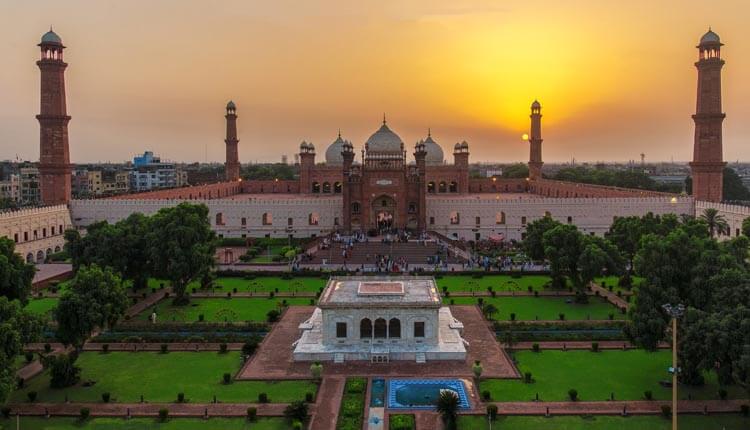
There is a massive range of places for tourism in Pakistan, while some of the most famous places and regions are below. You will even find rare animals like Snow Leopards, Ibex, Markhor, Mountain Goat, Tibetan Blue Bear, Tibetan Wolf, Himalayan Tahr, Argali, Marco Polo sheep, Pallas’ Cat etc. Here are some of the most astounding places in Pakistan.
- 13 Gates of Lahore (Punjab)
- Highest Mountain Ranges in Pakistan
- Minar-e-Pakistan in Lahore (Punjab)
- Historical Places in Pakistan
- Kund Malir Beach in Makran (Balochistan)
- Gwadar Cricket Stadium (Balochistan)
- Margala Hills in Islamabad (Punjab)
- Mohen Jo Daro in Larkana (Sindh)
- Northern Valleys in Pakistan
- Fairy Meadows (Gilgit Baltistan)
- Derawar Fort in Bahawalpur (Punjab)
- Beaches of Karachi
- Port Grand in Karachi (Sindh)
- Karakoram Highway (Punjab)
- Kirthar National Park in Jamshoro (Sindh)
Challenges of Tourism in Pakistan
If we discuss the hurdles and challenges of tourism in Pakistan, there are some concerns that need attention. Without working on them, we cannot proceed to meet the advanced standards. For instance, here are some challenges and obstacles of tourism in Pakistan.
Misconceptions
A decade back, very few foreigners preferred to enter Pakistan because of horrible marks left by terrorism but everything has changed now. Foreigners have started to visit Pakistan to experience the security measures and changes after the war against terrorism. Still, some people have misconceptions and fear because of the bombardment of negative information by some rival forces and media. Most of the westerners have a distorted perception of Pakistan which is somehow changing with time. Furthermore, some western vloggers had travelled throughout Pakistan recently to send a message of a safe and secure travelling experience, which gained huge popularity in the entire world via social media.
Safety and Security
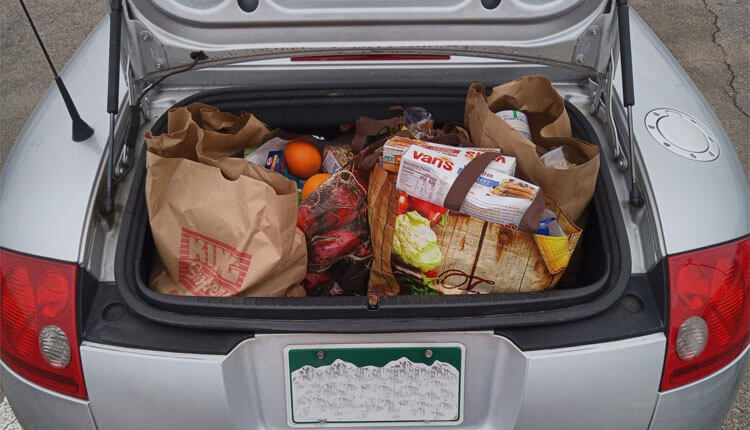
Every country needs safe and secure tourism without compromising anything. In addition, there are some gaps and a lack of coordination between private tourism companies and security forces, which raises questions about the safety of tourists. At the moment, everything is fine and foreign tourists also travel all over the country without any fear or hesitation. But there are some security measures that the government is working to tackle. Here is how you can tackle snowstorms while stuck in a car .
Language Barrier
For a better understanding, one needs proper communication, which is possible only through literacy. Foreign tourists struggle to communicate with locals because of the communication barriers. Even some vendors and hotel staff struggle to communicate with foreigners in the English language. As a result, foreigners have to hire an interpreter sometimes a guide to communicate with the locals, which adds up their expenses. Besides, this language barrier creates problems in other issues. To tackle it, the government should build training centres and focus on local academies for the literacy of the people in those areas.
Price Exploitation

This issue is almost everywhere in the world, where similar pricing standards are not followed. Some vendors exploit the tourists by hiking the prices of general items. Since most of them are overlooked by the authorities, they manipulate the foreigners into fabricated inflation. This issue has a seriously-negative impact on the tourism industry in Pakistan. It does not happen everywhere but in a few of the places while you will also experience the extravagance of the locals where they avoid charging the foreigners as a gesture of hospitality. This is very common in Pakistan where the locals have a strong sense of care for visitors. Strict and transparent law and order with proper implementation can help deal with it.
Hotels Oligopoly
Some specific areas have a common issue of oligopoly, where some hotels exploit the tourists through high charges in accommodation. Because of this issue, people prefer private tour guides and packages in advance. Now this problem is somehow under the spotlight of authorities since a big number of complaints were received against the hotel mafia. As a result, the Pakistan tourism industry faces backlash from all sources of media. Similarly, strict laws imposition can help deal with this issue.
Out-Dated Infrastructure

Some areas of tourism have outdated infrastructure which dents the Pakistan tourism industry. These areas are mostly in Sindh and Balochistan, which are southern and western regions respectively. Because of the lack of attention from their respective governments, their underdeveloped infrastructure harms tourism in Pakistan. Numerous places are worthy of exploration but to reach them you have to face multiple route difficulties. Proper coordination between the local government and PTDC (Pakistan Tourism Development Corporation) can help exterminate this matter.
These features and factors play a vital role in tourism in Pakistan, which is improving every year as the demand for travelling is rising. It is also improving the business cycle by contributing to the GDP of Pakistan. As the government and relative authorities are promoting tourism in Pakistan, the people of this country are also playing their role in revamping the best part of travelling.
If you have already made your mind for a tour of Pakistan, here is a list of backpacking for travelling and budget-friendly travelling . You may also have a look at Omicron, a new variant of COVID19 . For more informative blogs, visit Jagah Online . Don’t forget to follow us on Facebook .

Senior Content Writer With a prime focus on quality, my core purpose is to enrich the content with well-researched data.
Stop Worrying and Start using these Simple Carpet Cleaning Tips
PTA’s New Tax for Mobile Phones in Pakistan 2022
Kashmir Highway Islamabad: One of the Quickest Ways to Explore Islamabad
Bringing You Close to Wild Life – Virtual Zoo in Islamabad
Beat the Summer with -10 Degree Winterland Karachi
Let’s Explore the Heavenly Heights of Kalash Valleys
Welcome, Login to your account.
Recover your password.
A password will be e-mailed to you.

Best Environmental Website Of Pakistan
Home , OP-ED Articles
Digitalizing Tourism Industry in Pakistan – Trends, Challenges and Recommendations

Today is the era of globalization and there is no doubt about the role of technology in this regard. We are living in 21st century where a single aspect of our lives depends on technology, from minor to major, science takes its role. Everything is shaping and moulding according to technological advancement. It is transforming how we inform and connect ourselves, our behaviour, and even sustainability and innovation. Pakistan is a developing country and is underway progressiveness. The country is trying to put more use of technology and innovation in every walk of life. So is the chase with the tourism industry which at present is one of the prominent, leading as well as rapidly growing industries across the globe. Pakistan is also on its way toward digitalizing its tourism machinery, which is impeding positive growth in the future and will take part in the GDP of the country. With the ever-rising digitalization, different levels of strategies can be applied to any industry. Nowadays company comprehends that to stay driven it needs to excel in its services by providing profound and helpful technological services to its customers. Travel industries are no excuse. Digital tourism is on its way to take off. As once again peace started to prevail after a long and brutal war against terrorism, tourism has now been seen as a future potential economic contributor. It is evident from recent international trends after Forbes Magazine and several others enlisted Pakistan the top 10 countries to visit for 2020. There is a lot of potential for attracting tourists just by using social networks to promote beautiful natural scenes. The boom of social media has takeover the entire world in its lap. Each side of human life and also the surroundings is evolving on social media. Together with several alternative aspects, the touristy business has been greatly influenced by this medium of technological advancement and communication system. Each and every part of the globe is being represented on social media which has brought the entire world on one platform. Thus, the touristic spots, historical places, the endemic culture, and alternative aspects are published and marketed on this platform that is making new methods for the promotion of touristy within the country. Moreover, this medium features a positive aspect that has represented the nice image of the country and additional tourists are attracted to the new and exciting destinations in Pakistan. This article tend to highlight potential of eco-friendly tourism in Pakistan; trends and challenges to it’s growth and how recommendations to make a best use out if it.
POTENTIAL OF TOURISM IN PAKISTAN
Pakistan is diverse in terms of geography and culture it culminates. From tourists to religious sites, the nation has incredible potential for tourism. Pakistan has a larger potential for eco-tourism due to its scenic beauty, seasonal changes, varied culture, historical places, high-altitude mountains, and mineral and organic substances. According to World Trade Organization (WTO) 2020, Pakistan’s tourism will grow by US$39.8 Billion at intervals over a decade. This suggests that together with the immeasurable potential for tourism in Pakistan, the aid of tourism may even boost the economy to a different level. Together with this, the availability of facilities at intervals in this sector can become simple, reachable, and manageable for all. However, due to political unresponsiveness and disregard, most of the potential is lost. Pakistan’s riotous history has dominated its unused tourism potential, and the post-9/11 circumstance has assisted in defacing the country’s picture around the world. Luckily, the circumstances are changing. In recent years, the government of Pakistan has given crucial significance to the tourism segment. A number of worldwide seminars and occasions have been organized to advance the country’s tourism potential. Travel blogs by foreign bloggers have boosted tourism within the nation. International organizations have moreover made a difference to prioritize Pakistan’s tourism potential. In 2018, Pakistan was positioned as the best tourist goal for hiking by The British Backpacker Society . Samuel Joynson, one of its authors, positioned the nation at the front of the list only because of the friendliness and hospitality of the local people and the sensational mountain view. Pakistan’s northern belt is frequently compared to Switzerland for its unimaginable view and potential for snow sports. Similarly, the best travel magazine Conde Nast Traveller positioned the nation as the best on its list of Travel Goals of The World for 2021. The magazine expressed that the guests will discover that not much has changed since the Mughal period; they can investigate the winding trails, peaks’ gemstone mines, and the Fairy Meadows . Forbes moreover enrolled the nation as the best visitor destination.
Also Read: National Parks in Pakistan – Fauna, Flora and Importance
BENEFITS OF DIGITAL ECO-TOURISM
Digitization has provided multiple benefits to our tourism industry, they may include:
Major information shift: In the past, tourism used to be based on connections and personal relations, which provide limited opportunities to tourists including service-based information by enterprises. With the arrival of digital technology, people can now explore and gather information from the internet with less service-based and can be seen as more information-based. Creating competition: There is a lot of stuff available on social media as well as on different sites. Thus private enterprises, as well as hotels, must come up with something extra to excel in their business. Thus creating more competition which in turn provides more consumer benefits. Job creation : Digitalization has also caused to increase in jobs on online platforms for activities like e-commerce, social media marketing, and other media marketing. More consumer-based: Prior to digitalization, the sector was more service-based where consumers have limited options. With the arrival of technology, tourism has become more consumer-based which helps and appeals masses to industry. Preserving nature: By encouraging directly supporting local communities eco-tourism meant to preserve and protect nature. This low impact approach to tourism also help in sustainability and development of history and culture.
You Might Also Be Interested in: Environmental Damage Due to Tourism Industry of Pakistan
TRENDS AND CHALLENGES IN DIGITALIZATION OF TOURISM INDUSTRY
As the virtual age rises to a brand new level, virtual techniques may be implemented in nearly any enterprise. The tourism industry realizes that to live competitively it has to discover meaningful, useful business, and technological improvements for its clients. Nowadays, human beings are seeking out destinations, travels, and locations to live. They try this online, so requests for human assistance were captured with the aid of using the virtual era. Carrying a cellular smartphone and attempting to find the preferred vacation spot on more than one structure is a whole lot less difficult and quicker. For regular human beings and tourism suppliers, that is a massive change. If any organization related to the tourism or leisure enterprise can’t preserve up with the trend, it is going to be very harmful. The tourist platform must offer distinctive statistics and more than one alternative in a single package; otherwise, traffic will go away from the site, hoping to discover any other higher site. Artificial intelligence may be used to automate obligations formerly done with the aid of using people and boosting up particular mastering processes. At the equal time, it may enhance excellent and overall performance even at lowest costs. People need to live in contact even as visiting to get beneficial journey recommendations or percentage of their reviews with friends. Therefore, for travel carrier providers, it’s really well worth making an investment in wi-fi networks to the boom visitor experience. This virtual technology can enhance content material advertising and tourist experience. In addition, with the assistance of AR, they could without delay, offer commands with the smartphone’s camera.
Also Check Out: Environmental Impacts of Growing Tourism Industry of Pakistan
RECOMMENDATIONS
The following steps can be taken in order to enhance digital tourism in Pakistan:
1) Technological Innovations in Hotels: Steps should be taken to provide online services including online bookings which are currently under its way of development. Hotels in main tourist spots should be equipped with such facilities so that travel becomes easier and more convenient for tourists, especially foreigners. 2) Online Flight Bookings: International, as well as national flights, should book through the online system for reservations and payments should be made using the online banking system for time saving and comfortable experience. 3) Social Media Marketing and Publicity of Tourist Spots: Since each and every part of the world is known as being portrayed on social media. Government, private enterprises as well as private influencers and vloggers should try to publicize famous tourist spots, religious and historical places, and indigenous culture. 4) Digital Awareness: The government in cooperation with private enterprises must come up literacy program on the impact of digitization on tourism, for this, a specified system can be formed that provide awareness through conducting workshops, social media campaign, and awareness seminars. 5) Using VR Technology, Especially for Foreign Tourists: Virtual Reality technology can be used for making VR tourism videos that though working like normal video, can be viewed on websites or social media, but the user can find the entire scene by playing the video. Such technology must be provided especially to attract foreign tourists as well as domestic. Government must start working on it. 6) Building Eco-friendly Sustainable Resorts: Government must work on building sustainable, innovative and eco-friendly resort or Airbnbs. With the growing demands for environmentally friendly accommodations government must take it’s role for better cause. 7) Use Public Transport: Government must supply with or assist local communities to work for comfortable as well as affordable public transport and encourage tourist to make use of it instead of private transport to reduce carbon emission.
Also Read: Urgency of Climate Justice for Mountain Communities of Pakistan
With the modernization in communication and information technology, every aspect of life has moved towards a digital version of itself. So is the case with our tourism industry which is seen as potential as well as a rapidly growing market for the future. Tourism can be a billion-dollar industry in our country if providing basic facilities to tourists. Pakistan is on its way towards digitization of its tourism industry which is showing positive growth in the post-COVID-19 era and will contribute to the GDP of the country. Moving this sector towards digitalization will make it more cheap and easy for the country and tourists. Furthermore, by portraying the brilliant images of tourist spots using social media and other means, providing suggested policy and awareness on part of the government and other stakeholders to promote tourism culture, will add growth to the tourism industry in Pakistan. Alongside, we must encourage eco-friendly measure to sustain beauty of these natural places and undertake mass awareness for this cause.
The article was written by Mr. Hammad Abbasi ; He is a student of International Relations at Quaid-e-Azam University Islamabad. His areas of interest include Humanities, non-traditional security studies, and South Asian studies.
I hope you all liked this post! Please comment below if you have any suggestions, comments, or feedback! We at #envpk love hearing from our readers!
You may also like

Impacts of Climate Change on Water Resources of Pakistan
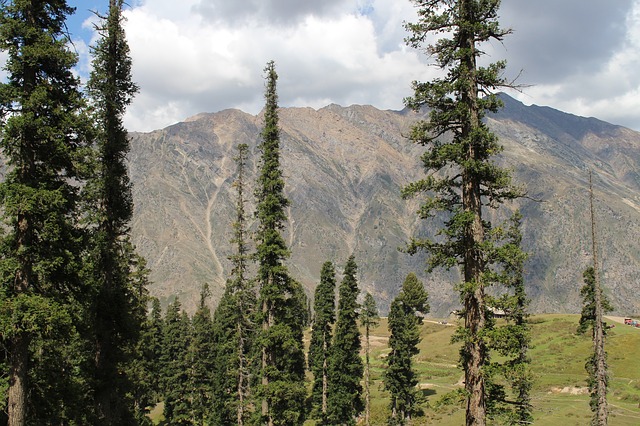
First-Ever Forest Monitoring System launched by Pakistan
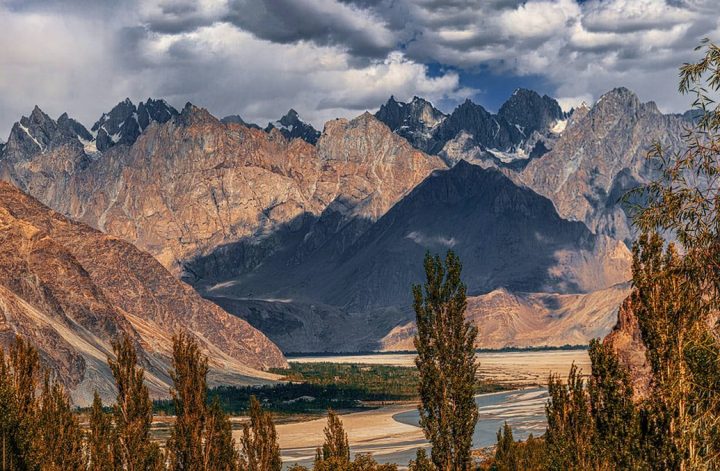
Transforming Gilgit: Sustainable Development and Conservation
Leave a reply cancel reply.
Your email address will not be published. Required fields are marked *
Save my name, email, and website in this browser for the next time I comment.
Copy short link

Promoting Tourism in Pakistan: Opportunities and Challenges
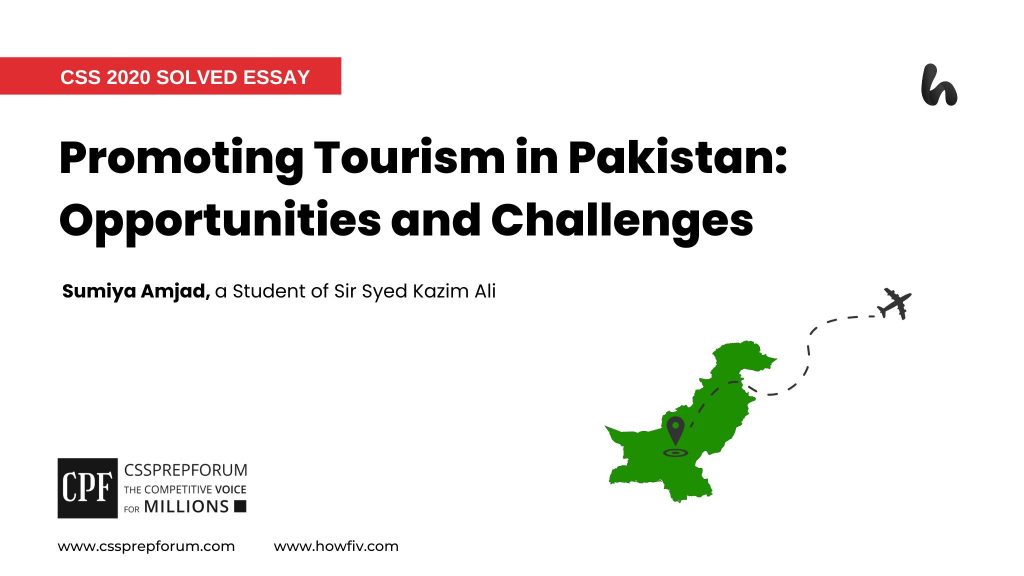
- Sumiya Amjad
- November 20, 2023
- CSS Solved Essays
CSS 2020 Solved Essays | Promoting Tourism in Pakistan: Opportunities and Challenges
Sumiya Amjad, a Sir Syed Kazim Ali student, has attempted the CSS 2020 essay “ Promoting Tourism in Pakistan: Opportunities and Challenges ” on the given pattern, which Sir Syed Kazim Ali teaches his students. Sir Syed Kazim Ali has been Pakistan’s top English writing and CSS, PMS essay and precis coach with the highest success rate of his students. The essay is uploaded to help other competitive aspirants learn and practice essay writing techniques and patterns to qualify for the essay paper.

1- Introduction
- ✓Pakistan’s tourism industry highlights the country’s stunning natural landscape.
- ✓Travel and tourism have significantly contributed to Pakistan’s GDP, amounting to US$7.6 billion.
- ✓Promoting Pakistan as a thriving tourist destination is essential for unlocking the country’s immense tourism potential.
2- Importance of the Tourism Industry
- ✓For a global perspective
- ✓For Pakistan’s economy and international image
3- Opportunities for Tourism in Pakistan
- Case in Point: UNESCO World Heritage Sites in Pakistan, such as Taxila, Lahore Fort, and Mohenjo-Daro, increase the number of tourists visiting cultural sites.
- Case in point: The Northern areas of Pakistan, including Swat Valley, Hunza, and Naran Kaghan.
- Case in Point: National parks and wildlife reserves, including the elusive Himalayan brown bear, graceful ibex, majestic golden marmots, and a plethora of avian species
- Case in point: BBC’s coverage of various historical sites of Buddhism, Sikhism, Sufi shrines, and the Shandur Polo Festival in Pakistan.
- Case in point: According to the World Crafts Council report, the craftsmanship and intricate designs of Pakistani artisans in areas like pottery, textiles, embroidery, and woodwork is renowned globally.
- Case in Point: According to the Pakistan Adventure Tourism Survey 2021, the country organizes various adventure sports activities, such as mountaineering, trekking, white-water, rafting, para-gliding, and hang gliding.
- Case in Point: CNN’s documentary “Taste of Pakistan “showcases the diverse and delectable cuisine of the country, garnering millions of views and sparking interest among food enthusiasts worldwide.
4- Challenges in Promoting Tourism in Pakistan
- Case in Point: The World Tourism Organization (UNWTO) emphasizes that enhancing security measures and creating a safe environment for tourists is essential for rebuilding confidence in Pakistan’s tourism industry.
- Case in point: The World Bank’s Infrastructure Data Report identifies Pakistan’s infrastructure limitations as a major hindrance to unlocking its tourism potential.
- Case in point : The Economist Intelligence Unit Country Risk Report 2021 shows political uncertainty hinders tourism in Pakistan.
- Case in point: The WWF 2019 report shows the importance of preserving Pakistan’s biodiversity.
- Case in point: A study by the Pew Research Center reveals that media portrayal has deep influences on tourists’ perceptions .
- Case in point: The Pakistan Tourism Development Corporation emphasizes the urgent need for training and capacity building to meet the demands of the growing tourism industry.
- Case in point : The Pakistan Meteorological Department’s climate data shows the impact of extreme weather conditions on tourist seasons.
5- Recommendations for Sustainable Growth in the Tourism Industry
- ✓Strengthening security measures
- ✓Improving infrastructure and connectivity
- ✓Promoting community-based tourism
- ✓Implementing eco-friendly practices and waste management systems
- ✓Creating collaborative efforts between the government and private sector
- ✓Arranging tourism promotion campaigns
- ✓Organizing skill development programs
- ✓Upgrading transportation infrastructure
6- Critical Analysis
7- Conclusion

Tourism, as a catalyst for economic growth and cultural exchange, plays a pivotal role in shaping a nation’s identity and global standing. Similarly, Pakistan’s tourism industry plays a significant role in showcasing the breathtaking natural beauty of the country to the world. The country, adorned with diverse natural beauty ranging from the mighty Himalayas to the serene beaches of the Arabian Sea, is a mesmerizing tapestry of landscapes that captivates the soul. The allure extends beyond its picturesque vistas as the country boasts a colourful culture, vibrant cities, and historic landmarks, adding to its allure as a South Asian gem. Within the rich tapestry lies the immense potential for tourism, which has made significant contributions to the country’s economy. According to The World Travel and Tourism Council Reports 2016, the direct contribution of travel and tourism to Pakistan’s GDP has been a substantial US$7.6 billion (PKR 793.0 billion), constituting 2.7% of the total GDP. This figure is expected to soar, with the government predicting tourism to contribute ₨1 trillion (US$6.0 billion) by 2025 . Furthermore, tourism is not only a lucrative revenue generator but also a vehicle for promoting a country’s culture and civilization. In this regard, Pakistan stands as an undiscovered treasure trove. Beyond its natural beauty, Pakistan boasts an abundance of historical, religious, archaeological, and adventurous sites that possess a magnetic allure for global tourists, such as Mohenjo-Daro and Taxila, the religious sanctity of Kartarpur Corridor, the mystique of Sufi shrines, and the adrenaline of adventure sports. Despite the treasure trove of opportunities, Pakistan’s tourism industry has faced challenges that have hindered its full potential. Like security concerns arising from past incidents, the lack of advanced and sufficient infrastructure, and inadequate promotion activities. However, these challenges, though daunting, are not insurmountable. By addressing security issues, investing in infrastructure, and embracing effective marketing strategies, Pakistan can forge a path toward sustainable growth in its tourism sector. In a nutshell, with strategic planning and unwavering commitment to responsible tourism, the nation can redefine its narrative, drawing travellers from every corner of the world to witness the magic that lies within its borders.

The tourism industry stands as a powerhouse in the global economy. It not only generates substantial revenue but also creates employment opportunities, fosters cultural exchange, and promotes sustainable development. On a global scale, the tourism industry serves as a vital driver of international trade, stimulating investments in hospitality, transportation, and infrastructure sectors. For Pakistan, the tourism industry bolsters the economy, creates job opportunities, and enhances the country’s global image as an enticing destination. As tourists explore the country, they contribute to the growth of rural economies, encouraging the preservation of traditional arts and crafts. Hence, the significance of the tourism industry cannot be ignored.
The tourism sector in Pakistan has tremendous potential because the country boasts a rich cultural heritage and is home to numerous historical sites that unlock the versatility of Pakistani culture. For instance, UNESCO World Heritage Sites such as Taxila, Lahore Fort, and Mohenjo-Daro attract a significant number of tourists interested in exploring cultural sites. These sites provide a glimpse into the country’s ancient civilizations, showcasing the architectural brilliance, intricate artwork, and historical significance of the region. Tourists can immerse themselves in the country’s vibrant history and gain a deeper understanding of its cultural tapestry. Moreover, the northern areas of Pakistan offer breathtaking experiences to tourists. Destinations like Swat Valley, Hunza, and Naran Kaghan are renowned for their stunning natural landscapes. These scenic locations provide opportunities for hiking, camping, photography, and nature appreciation and attract nature enthusiasts and adventure seekers from around the globe. Furthermore, the country is home to national parks and wildlife reserves, preserving the habitat of various species. Tourists can witness the elusive Himalayan brown bear, graceful ibex, majestic golden marmots, and a plethora of avian species in their natural habitats. Thus, Eco-tourism promotes conservation efforts by raising awareness about the importance of protecting these unique ecosystems and supporting local communities. Additionally, the country’s religious and cultural festivals showcase the vibrancy of its traditions. From the ancient ruins of Buddhist and Sikh sites to the Sufi shrines and the Shandur Polo Festival, numerous celebrations offer a glimpse into the country’s diverse heritage. The BBC’s coverage of these festivals and historical sites has further increased international interest and awareness, attracting tourists who seek to explore the spiritual and cultural dimensions of Pakistan. Likewise, Pakistani handicrafts and traditional arts reflect the country’s artistic heritage. Artisans showcase their craftsmanship and intricate designs in pottery, textiles, embroidery, and woodwork. Fortunately, their work has gained recognition globally, and the World Crafts Council has acknowledged the excellence of Pakistani artisans. As a result, cultural exchange has been promoted, and local economies have been supported. Similarly, the country hosts mountaineering expeditions, trekking routes through breathtaking mountain ranges, white-water rafting in wild rivers, and thrilling activities like para-gliding and hang gliding. The Pakistan Adventure Tourism Survey 2021 highlights the variety of adventure sports available, attracting adrenaline enthusiasts who seek thrilling experiences in a picturesque setting. Last but not least, Pakistani cuisine is a blend of flavours influenced by various regions and cultures. Culinary tourism allows visitors to savour Pakistan’s rich and diverse gastronomic heritage. CNN’s documentary “Taste of Pakistan” has showcased the country’s cuisine to a global audience, generating interest among food enthusiasts. In summary, Pakistan offers a wide range of tourism opportunities. Its rich cultural heritage provides a unique and immersive experience for travellers. By capitalizing on these strengths, Pakistan can attract more tourists and boost its tourism industry while showcasing the country’s hidden gems to the world.
Despite the treasure trove of opportunities, Pakistan’s tourism industry has faced many challenges that have hindered its full potential. First and foremost, security concerns hamper the true essence of tourism in Pakistan by creating a climate of fear and uncertainty among potential travellers. To address the uncertainty arising from security concerns, the World Tourism Organization (UNWTO) emphasizes the need to enhance security measures and create a safe environment for tourists to rebuild confidence in Pakistan’s tourism industry. Second, insufficient infrastructure in Pakistan poses a significant deterrent for both domestic and international travellers. Poor road networks, limited transportation options, and inadequate facilities at tourist sites lead to inconveniences and difficulties during travel and deter tourists from venturing beyond their immediate surroundings, limiting the exploration of the country’s diverse landscapes and cultural treasures. The World Bank’s Infrastructure Data Report underscores the urgent need for investment in upgrading and expanding infrastructure to cater to the growing demands of the tourism industry . Third, political instability and environmental degradation act as formidable barriers that diminish the charm of tourist attractions in Pakistan. Political instability, as highlighted in The Economist Intelligence Unit Country Risk Report 2021 , introduces uncertainty, creating an unfavourable climate for tourism. Frequent changes in government policies, civil unrest, and security concerns deter potential tourists who seek safety when planning their travel. In the latter case, the degradation of natural habitats, pollution, and deforestation not only erodes the charm of once-pristine locations but also diminishes the unique experiences that visitors seek. So, addressing environmental degradation is paramount for Pakistan to maximize the allure of its tourist attractions. As exemplified in the WWF 2019 report , preserving Pakistan’s biodiversity is of utmost importance in ensuring the long-term sustainability of its tourist attractions. Fourth, media portrayals and a lack of trained personnel are also limiting the potential of the tourism industry in Pakistan. Negative media portrayals provoke potential visitors to choose to explore other destinations without fully experiencing the wonders Pakistan has to offer. A Pew Research Center study also reveals that negative media coverage can significantly shape the decision-making process for potential travellers, leading to a decline in tourist arrivals. Moreover, the lack of trained personnel skills in hospitality, tour guiding, customer service, and language proficiency prevents the tourism industry from providing satisfactory experiences for tourists, resulting in reduced visitor satisfaction and repeat visits. Lastly, seasonal issues affect year-round tourism in Pakistan, posing challenges for both domestic and international travellers. During the scorching summer months, travellers often flock to the serene Northern areas to escape the heat and revel in the beauty of lush valleys and glistening lakes. However, these regions become less accessible due to heavy land sliding, limiting travel options and restricting certain activities. Similarly, the coastal areas of Pakistan offer a respite from the summer heat and attract tourists. However, the onset of the monsoon season brings torrential rains, which disrupt travel plans and hinder beach tourism. So, seasonal constraints affect the livelihoods of local communities that rely on tourism, leading to economic challenges.
The following recommendations can be considered to achieve sustainable growth in Pakistan’s tourism industry. First of all, enhancing security measures is crucial to address safety concerns and instil confidence in tourists. It involves increasing the presence of law enforcement agencies in tourist areas, implementing effective surveillance systems, and providing training to security personnel to ensure the safety of visitors. Moreover, investing in infrastructure development is essential to improve accessibility and enhance the overall tourism experience. It includes improving road networks, upgrading airports, and expanding transportation options to connect tourist destinations, ensuring reliable and high-speed internet connectivity and access to information for tourists. Further, encouraging community participation and involvement in tourism activities also has numerous benefits. It helps to empower local communities, generate income, preserve cultural heritage, and create a more authentic and sustainable tourism experience. Likewise, emphasizing sustainable tourism practices is crucial for preserving natural resources and protecting the environment. Implementing eco-friendly practices, such as promoting responsible tourism, reducing plastic waste, and supporting initiatives for energy conservation, can contribute to the long-term sustainability of the tourism industry. Besides, collaboration between the government, private sector, and local communities is essential for sustainable growth in the tourism industry. Encouraging public-private partnerships, fostering dialogue, and involving stakeholders in decision-making processes can lead to more effective and coordinated efforts in developing and promoting tourism. Additionally, investing in tourism promotion campaigns, both domestically and internationally, can raise awareness of Pakistan as a tourism destination. These campaigns can highlight the country’s unique attractions and cultural heritage, help reach a wider audience, and attract more tourists. Similarly, providing training and skill development programs for tourism professionals is crucial for improving service quality and enhancing the overall visitor experience. Last but not least, developing efficient and reliable transportation infrastructure is vital for improving accessibility to tourist destinations. Upgrading roads, expanding public transportation options, and enhancing connectivity between different regions can make it easier for tourists to navigate and explore the country. Hence, by implementing these recommendations, Pakistan can foster sustainable growth in its tourism industry. It will not only attract more visitors but also contribute to the economic development of the country, preserve cultural heritage, protect the environment, and empower local communities.
Critically, Pakistan’s potential for religious and cultural tourism is a remarkable asset that can elevate the nation’s economy and global standing. By strategically focusing on accessibility, multicultural celebrations, and responsible conservation efforts, Pakistan can unlock the true essence of its tourist attractions and create a vibrant and sustainable tourism industry.
In a nutshell, Pakistan possesses significant potential for tourism growth, thanks to its diverse cultural heritage, natural landscapes, and warm hospitality. However, several challenges need to be addressed to ensure sustainable development in the tourism industry. Strengthening security measures, improving infrastructure, promoting community-based tourism, implementing eco-friendly practices, fostering collaboration, and upgrading transportation infrastructure are important steps toward achieving sustainable growth.

CSS Solved Past Papers’ Essays
Looking for the last ten years of CSS and PMS Solved Essays and want to know how Sir Kazim’s students write and score the highest marks in the essays’ papers? Then, click on the CSS Solved Essays to start reading them. CSS Solved Essays
CSS 2020 Solved Essays
Are you searching for CSS 2020 solved essays by Sir Syed Kazim Ali’s students? Click on any of the topics to start reading the solved essays.
CSS Solved General Science & Ability Past Papers
Want to read the last ten years’ General Science & Ability Solved Past Papers to learn how to attempt them and to score high? Let’s click on the link below to read them all freely. All past papers have been solved by Miss Iqra Ali & Dr Nishat Baloch , Pakistan’s top CSS GSA coach having the highest score of their students. General Science & Ability Solved Past Papers
Articles Might Interest You!
The following are some of the most important articles for CSS and PMS aspirants. Click on any to start reading.
Recent Posts

Top Categories
Cssprepforum, education company.

cssprepforum.com
Welcome to Cssprepforum, Pakistan’s largest learning management system (LMS) with millions of questions along with their logical explanations educating millions of learners, students, aspirants, teachers, professors, and parents preparing for a successful future.
Founder: Syed Kazim Ali Founded: 2020 Phone: +92-332-6105-842 +92-300-6322-446 Email: [email protected] Students Served: 10 Million Daily Learners: 50,000 Offered Courses: Visit Courses
More Courses

Basic English Grammar and Writing Course
Extensive English Essay & Precis Course for CSS and PMS

CSS English Essay and Precis Crash Course for 2023
Subscribe to our mailing list to receives daily updates direct to your inbox.

- CSS Solved GSA
- CSS Solved PA
- CSS Solved Islamiat
- Current Affairs
- All Courses
- Writers Club
- All Authors
- All Members
- All Teachers
- Become an Author
- Who is Sir Syed Kazim Ali?
- Privacy Policy
CssPrepForum is Pakistan’s largest and greatest platform for CSS, PMS, FPSC, PPSC, SPSC, KPPSC, AJKPSC, BPSC, GBPSC, NTS, and other One Paper 100 Marks MCQs exams’ students. It has become Pakistan’s most trusted website among CSS, PMS students for their exams’ preparation because of its high-quality preparation material.
@ 2023 Cssprepforum. All RightsReserved.
- Share full article
Advertisement
Supported by
Guest Essay
What Is Going On in Pakistan?

By Ayesha Siddiqa
Ms. Siddiqa is an expert on Pakistan’s military.
For decades, Pakistan’s military has been the country’s most vital institution. Although it frequently intervened to oust elected governments, many Pakistanis saw this as salvation from the country’s blundering politicians. The army, it was thought, was the only force capable of holding the country together.
The question now is whether the generals can keep themselves together.
The military has suffered a catastrophic loss of prestige after the populist former prime minister Imran Khan directly challenged its influence. In response, Mr. Khan was ousted and jailed, and his party — despite winning the most parliamentary seats in a divisive February election — was shut out of a new civilian government that took power this month with the blessing of the military leadership. The country remains deeply polarized.
But an even greater concern for Gen. Syed Asim Munir, the army chief, is that the polarization extends into the military itself. It is common knowledge in Pakistani political circles that significant portions of the military leadership, powerful military families and rank-and-file officers are sympathetic to Mr. Khan’s right-wing, anti-American vision for the country, which included aligning Pakistan more closely with China and Russia. Whether this internal rift can be healed will ultimately decide the direction and stability of Pakistan, which has nuclear arms and is the world’s fifth most populous.
These divisions could hardly come at a worse time for Pakistan. The economy is near collapse , and General Munir is working to repair relations with Washington that were badly frayed by Mr. Khan’s politics. Pakistan is beset by political and security challenges on all sides, including by its archrival, India, under Prime Minister Narendra Modi, a Hindu nationalist, as well as Iran and the Taliban-held Afghanistan. Iranian forces launched airstrikes on targets in Pakistan in January, prompting Pakistani counterstrikes. This month Pakistani military posts were hit by militant attacks in the country’s south and along the border with Afghanistan.
The military, of course, bears much of the blame for the country’s predicament. After the decade-long military regime of Gen. Pervez Musharraf ended in 2008, Pakistan returned to a fragile democracy. But the army leadership began to fear that the two dominant political parties, the Pakistan Muslim League-Nawaz and the Pakistan People’s Party, were seeking to rein in military influence.
The generals faced other pressures, too. The United States imposed conditions on financial aid to Pakistan’s military in 2009 and killed Osama bin Laden on Pakistani soil in 2011. Later that year, 28 Pakistanis were killed in an accidental clash between NATO and Pakistani forces along the border with Afghanistan. A popular narrative gained ground, partly fanned by the army, that portrayed the United States as conspiring to undermine the nation’s sovereignty.
The military leadership sought a more cooperative political partner to help face these challenges and counterbalance the entrenched parties. It paired up with Mr. Khan, a popular cricket-star-turned-politician who had been a supporter of General Musharraf’s government and a harsh critic of Pakistan’s dynastic political families, which he accuses of corruption.
It backfired.
Mr. Khan, who was elected prime minister in 2018, inflamed Pakistanis with his calls to tear down the political establishment and reject American influence. But with inflation hitting double digits, he faced growing public criticism of his handling of the economy. He accused the military of conspiring with the United States to force him out, creating a rift. With a political crisis threatening to add to the economic problems, he was removed from office by a parliamentary no-confidence vote in April 2022 that bore the fingerprints of the military leadership.
When a high court ordered his arrest in May of last year, his supporters openly turned against the army, protesting in the streets and even attacking the residences of senior army officers and other military targets.
As last month’s elections approached, the military took steps to ensure Mr. Khan’s party would not win. He was sentenced just before the election to long prison terms on much-questioned charges of corruption and leaking state secrets, and severe restrictions were imposed on his party, Pakistan Tehreek-e-Insaf, that essentially barred its candidates from campaigning.
But Mr. Khan’s message — fanned by anger over the generals’ meddling — continued to resonate, and candidates aligned with his party stunned the military by winning the most seats in Parliament. The military kept them from power by engineering the current coalition government, which is headed by Prime Minister Shehbaz Sharif and includes traditional parties that the generals once sought to marginalize by aligning with Mr. Khan.
In addition to a withering economic and security landscape, that government now also faces large swaths of Pakistanis who feel the election was stolen. The military, which is propping up the government, is powerful enough that it might very well weather the damage to its reputation, but it needs to get its own house in order.
Serving and retired officers have explicitly called for General Munir to take a softer approach toward Mr. Khan, and it is widely known in Pakistan that members of some military families participated in last May’s protests over how Mr. Khan was being treated.
General Munir is busy trying to extinguish that fire, reminding officers that the violence last May targeted the military and moving to gag dissent within the armed forces to stop pro-Khan sentiments from spreading further.
He may succeed in the short term, but this story is far from over.
General Munir’s three-year term expires in November of next year, and many officers expect that his successor could be more sympathetic to Mr. Khan — the enmity between the two men is widely believed to stem from a personal rivalry — perhaps even leading to new elections and Mr. Khan’s return to the political stage. This would not be unprecedented: Pakistan has a history of backroom machinations resulting in ousted leaders being brought back. (The prime minister’s brother Nawaz Sharif was removed three times as prime minister and twice went into exile. He returned ahead of the February elections and is expected to exert behind-the-scenes influence over his brother’s government.)
This is where things could get dangerous for Pakistan. Mr. Khan has remained intransigent, refusing to negotiate with his rivals in the military and political establishment. Many fear where a vengeful Mr. Khan could lead Pakistan if he were to return. And yet if General Munir tries to extend his tenure to retain the status quo, military disunity could flare.
Army unity looks likely to hold for the time being. But all is not well in the military fraternity. Unless Pakistan’s generals can patch the rift over Mr. Khan, the country’s political stability, its security and its future will be difficult to predict.
Ayesha Siddiqa (@iamthedrifter) is a political scientist at King’s College, London, and the author of “Military Inc.: Inside Pakistan’s Military Economy.”
The Times is committed to publishing a diversity of letters to the editor. We’d like to hear what you think about this or any of our articles. Here are some tips . And here’s our email: [email protected] .
Follow The New York Times Opinion section on Facebook , Instagram , TikTok , WhatsApp , X and Threads .

IMAGES
COMMENTS
Challenges Faced by Pakistan's Tourism Industry. With an expanding workforce and a culture known for its hospitality, Pakistan ticks all the boxes required to create a self-sustaining tourism industry. However, tourism in Pakistan was never entirely given precedence at both federal and provincial levels to benefit tremendously.
The travel and tourism sector's total contribution to Pakistan's GDP was 5.9 percent in 2022 and 4.2 million jobs. This is sub-optimal considering the diverse tourist sites located across the country. Pakistan attracted ~US$ 16 billion in visitor spending in 2022 which is projected to touch ~US$ 30 billion in 2033.
The tourism sector employed 3.9 million people in 2019, but the pandemic led to significant job losses and a drop in its GDP contribution from 5.7% to 4.4% [35,36]. Travel restrictions, lockdowns ...
According to the World Bank, Pakistan brought in $16 billion in tourist spending in 2022, and that amount is expected to rise to $30 billion by 2033. The travel and tourism sector's total ...
Tourists enjoy the snow at the hill resort town of Murree, 60 km (38 miles) northeast of the capital Islamabad, February 5, 2012. — Reuters/File
In order to fully exploit this immense potential, there is a need to address a number of issues faced by the tourism industry in Pakistan. To prepare a comprehensive research paper on the tourism sector in Pakistan, the Services Division of TDAP has prepared an extensive research report. The key challenges
Since the tourism sector of Pakistan is facing high volatility, uncertainty, and ambiguity due to various challenges, such as security concerns, political instability, natural disasters, and ...
In conclusion, sustainable tourism in Pakistan is vital for economic growth, cultural preservation, and environmental conservation. To overcome challenges and realize the full potential of sustainable tourism, Pakistan must invest in infrastructure, prioritize security, promote responsible practices, and engage local communities in the process.
Abid Shaukat, TDCP's public relations officer, said ticket sales for the double-decker bus are impacted by Lahore's multipronged environmental challenges. "The open-air upper deck is where ...
Pakistan has great potential and offers diverse opportunities for tourists, such as trout fishing in the glacial water of Gilgit Baltistan and Swat rivers, Shandur Polo traditional tournament, paragliding, rock climbing, and trekking in northern areas, Jeep and camel safari in the Cholistan desert, Wild Boar hunting, and crabbing in the Arabian ...
Pakistan Tourism: Challenges and Strategies for Sustainable Growth . Tourism is an economic backbone for every country, including Pakistan, and many countries across the world are expanding their economic growth through tourism. Tourism is becoming more popular in Asia, particularly in Malaysia, Singapore, Hong Kong, and Thailand, as a result ...
In 2020 the World Travel and Tourism Council (WTTC) reported that the travel and tourism industry in 2019 continued at a growth rate of 3.5%, exceeding the global economy growth (2.5%) for nine ...
Pakistan tourism industry and challenges: a review. Asia Pacific Journal of Tourism Research , 2018, 121-132. Baker. (2020). Tourism and Terrorism: Terrorists' Threats to Commercial Aviation Safety and Security. london: Emerald Publishing Limited. Kakar, a. K. (2007). 'The relation between tourism and employment in Pakistan.' . karachi ...
There are many opportunities available in Pakistan which can boost the tourism in Pakistan but at the same time there are many challenges which cause hindrances in promotion of the tourism industry. These challenges include inadequate infrastructure, poor security situation, lack of government's will, efficient policies, and at the same time ...
According to the World Travel and Tourism Council, the direct contribution of travel and tourism to Pakistan's GDP in 2016 was US$7.6 billion (PKR 793.0 billion), constituting 2.7% of the total GDP. By 2025, the government predicts tourism will contribute ₨1 trillion (US$6.0 billion) to the Pakistani economy. Wikipedia.
Based on the technological technology tourism challenges and analysis, the research has implied the use of technology in context of tourism, while seeing challenges for countries like Pakistan. IT has impact on competitiveness and on increased productivity, while it generally has a positive effect on increasing corporate tourists and trust (Haq ...
In recent days, the need to promote tourism in Pakistan has become quickly obvious. It is a bit of a stretch to compare Pakistan to various popular tourist sites, including Turkey, Italy, and Malaysia. Over the past few years, there have been a lot more tourists travelling to Pakistan. In Pakistan, obtaining a tourist visa is now simpler.
Despite these attractions, tourism in Pakistan faces a number of challenges, including security concerns and poor infrastructure. However, the government is taking steps to address these issues, such as investing in tourism infrastructure, improving security for tourists, and promoting the country's image abroad.
Challenges of Tourism in Pakistan. If we discuss the hurdles and challenges of tourism in Pakistan, there are some concerns that need attention. Without working on them, we cannot proceed to meet the advanced standards. For instance, here are some challenges and obstacles of tourism in Pakistan.
Tourism is a key source of income and employment today, and different parts of the world are heavily dependent on it. The main purpose of this article was to demonstrate the consequences of long-run and short-run relationship on international tourism in Pakistan and its impact on economic growth by applying an autoregressive distributed lag (ARDL) bounds testing approach.
Digitalizing Tourism Industry in Pakistan - Trends, Challenges and Recommendations. August 9, 2022 No Comments. Today is the era of globalization and there is no doubt about the role of technology in this regard. We are living in 21st century where a single aspect of our lives depends on technology, from minor to major, science takes its role.
The tourism industry of Pakistan comprises sports, adventure, eco-tourism, historical, gastronomy, and religious tourism. The country has seen a massive inflow of visitors in the last few years and it will likely continue to grow; as per Statista, the tourism industry of Pakistan is projected to reach US$3,008.00m in 2023.
Sumiya Amjad, a Sir Syed Kazim Ali student, has attempted the CSS 2020 essay " Promoting Tourism in Pakistan: Opportunities and Challenges " on the given pattern, which Sir Syed Kazim Ali teaches his students. Sir Syed Kazim Ali has been Pakistan's top English writing and CSS, PMS essay and precis coach with the highest success rate of ...
Pakistan is beset by political and security challenges on all sides, including by its archrival, India, under Prime Minister Narendra Modi, a Hindu nationalist, as well as Iran and the Taliban ...